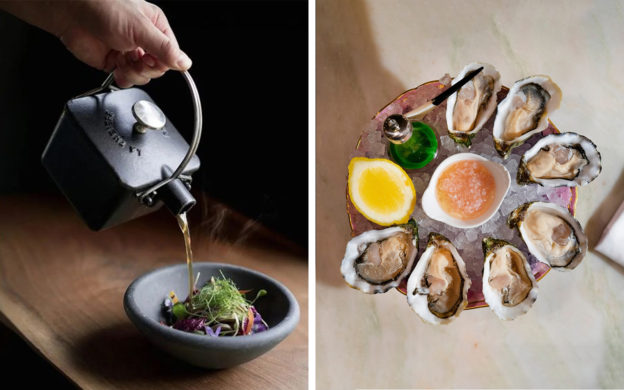With yet another challenging year on record in the food industry and still more uncertainty on the horizon, Copenhagen’s restaurants, cafes, and bars have nevertheless risen to the occasion. In fact, judging from the sheer amount of talent and ambition on display amid the slate of openings, it’s fair to say that dining out in town is more invigorating than ever.
Best of all: the commitment to a code of conduct and set of values that lie at the core of so many new businesses, which should hopefully give rise to healthier norms across the industry. As owner Meme Marta Faguioli of Casamadre says, “Kindness is just as important in our hiring process as any technical skill.”
Here are the best new restaurants, cafes, and bars to try in Copenhagen this year:
|
|
|
Copenhagen Restaurants
 Bistro Lupa
Bistro Lupa
Constraint can often inspire extraordinary creativity—particularly in the culinary world, where plant-based dining has emerged as a powerful force of change in recent years. Innovative chefs are discovering the dazzling array of flavors and textures that emerge from pushing the boundaries of what vegetables can do. Case in point? Look no further than Bistro Lupa.
Set in the former location of Beyla (formerly called Souls) in Østerbro, and sister restaurant to the ultra-refined Ark, Bistro Lupa made a name for itself with its bottomless two-hour brunches featuring experimental dishes: a spin on French toast, for example, made with soymilk bread topped with roasted sunflower seed praline and coconut yogurt.
Ark Collection executive chef Brett Lavender drew on his 15 years of cooking influences and travels from Australia and New Zealand to South Africa and Japan. “I like to think we’re leading the way and showing our guests what can be done with plant-based food,” Lavender says.
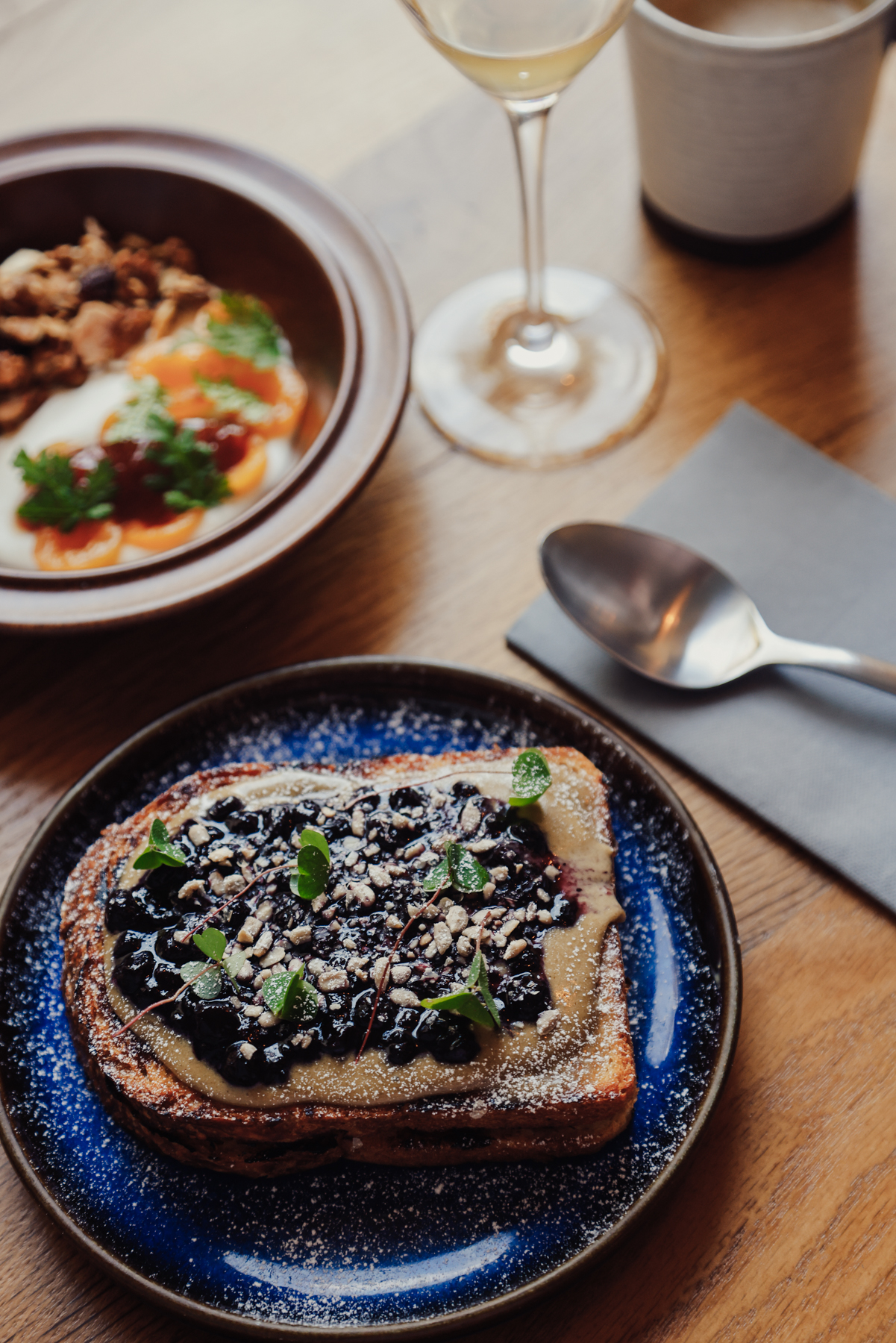 |  |
 | 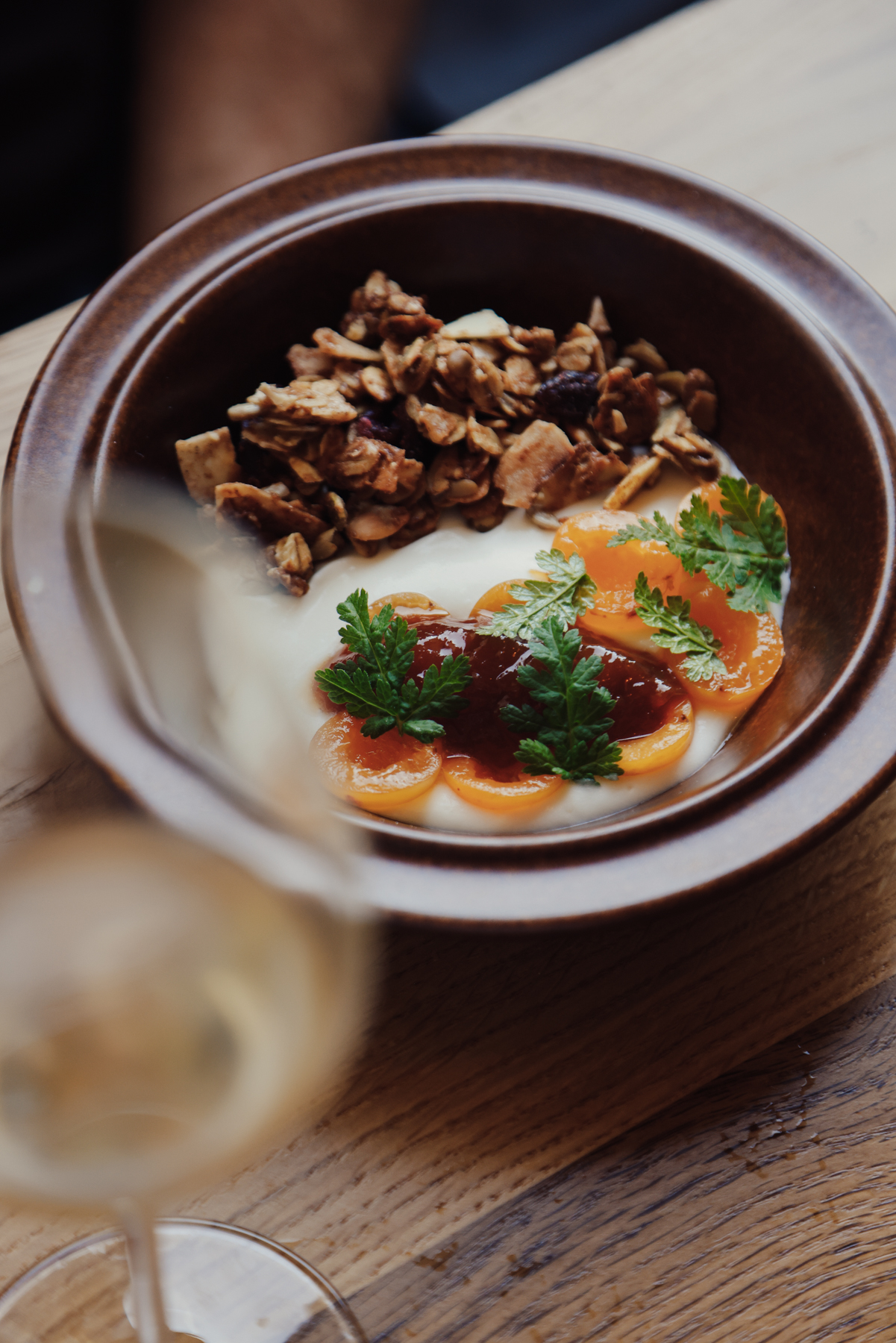 |
As befits a vegetable-driven concept, the menu focuses heavily on what’s in season. Sometimes, as in the Celeriac Tagliatelle, an unsung food becomes a star attraction. “[Celery root] is one of my favorite ingredients—so good this time of year,” Lavender says. “We started to look at it from a different angle: How can we make this an exciting dish that isn’t a salt-baked piece of celeriac or a puree?” Another staple is the Almond Cottage Cream Cheese, recently served with charred spring onions, microgreens, and a vibrant drizzle of leek oil. “I’m not overly impressed with the vegan products on the market. They don’t fill our needs at the restaurants, so we have to make them ourselves,” Lavender says.
Essential to Bistro Lupa’s success are its close collaborations with suppliers such as Funga Farm, run by “mushroom genius” Kyle Commetta and co-owned by Ark Collection. “The products he has managed to farm in an urban environment and in a sustainable way are nothing short of unbelievable. You’d be pushed to find better mushrooms anywhere in the world,” Lavender says. “They play such an integral part on the menu at Lupa.”
That includes Lavender’s own favorite item, the Lupa Fried Mushroom. “Every time I eat it, I’m amazed how closely it resembles chicken. And the secret spice mix with the tamarind BBQ sauce is a great combination.”
 |  |
Lavender believes Copenhagen’s plant-based food scene will only grow in popularity. “It’s the next step towards a sustainable future. And I think more restaurants will start to showcase their plant-based skills, so it will be exciting to see what happens over the next few years.” For a visual dive into what the Ark Collection kitchen team is developing next, check out Lavender’s Instagram profile: chef_brettlavender.
Best for: A three-course daytime feast paired with housemade kombucha or a sustainably minded cocktail.
Bistro Lupa
Marstalsgade 8
2100 København
 Casamadre
Casamadre
“In Italy, it’s very common to have ‘your restaurant’—a place where you know the owners, you know you’re going to meet someone in your circle, have a nice conversation, nurture relationships, and have a simple yet excellent meal.” That’s how Meme Marta Faguioli describes the inspiration behind Casamadre, which she runs with her partner, chef Riccardo Giraldo.
“We felt that Copenhagen was missing an authentic Italian restaurant—one that keeps it real, humble, and tasty,” Faguioli continues. Clearly, they’ve hit a chord: In just a few short months, the intimate spot in a former kombucha bar on a non-touristy corner of Nørrebro has become a favored hangout for fashion insiders and other locals in the know.
 | 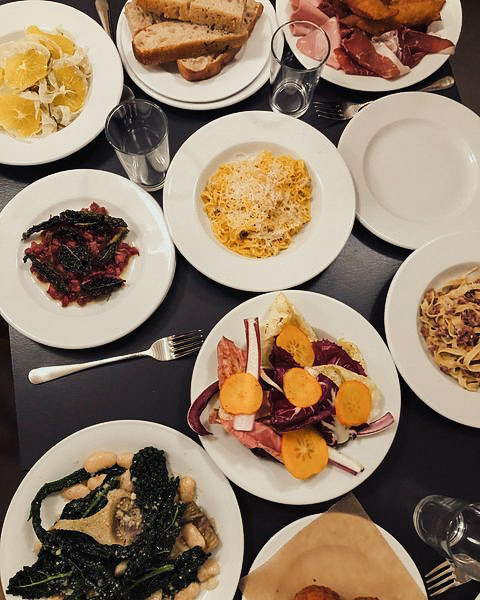 |
Much of the ambience evokes memories of Faguioli and Giraldo’s homeland. “From the old interior, we kept the bar counter, which is super beautiful—solid oak, made by the father of one of the [previous owners]—but we covered it with stainless steel to give it that feeling of an Italian bar,” Fagiuoli explains. Open steel shelving adds a dose of modernity against walls paneled in cream and white, in keeping with the style of traditional trattorias.
Like many beloved Italian restaurants, the menu is focused, unfussy, and heartfelt. “We do everything from scratch—from the pasta to the mascarpone for the tiramisu,” Fagiuoli says.
“We work closely with some amazing Danish suppliers, from whom we source the majority of produce. Italian cuisine is quite simple in itself, so the quality of the produce is key. And what we really add is the love of preparing and serving food.”
The menu is anchored by a weekly selection of pastas handmade by sous-chef Margherita, who hails from Sardinia. Giraldo mentions three current favorites, including the tagliatelle al ragu. “The recipe is so simple, being a mix of egg and flour; the difference is in the hands of the person who makes them,” he explains. Then there’s the gnocchi with butter and sage—“so simple, so Italian. Gnocchi are typical of the area we come from in Italy, Veneto. And Denmark has some incredible potatoes and butter, so the result is so tasty and satisfying.” The potatoes come from Birkemosegaard, a biodynamic farm in Sjællands Odde where Giraldo previously worked as head chef.
 | 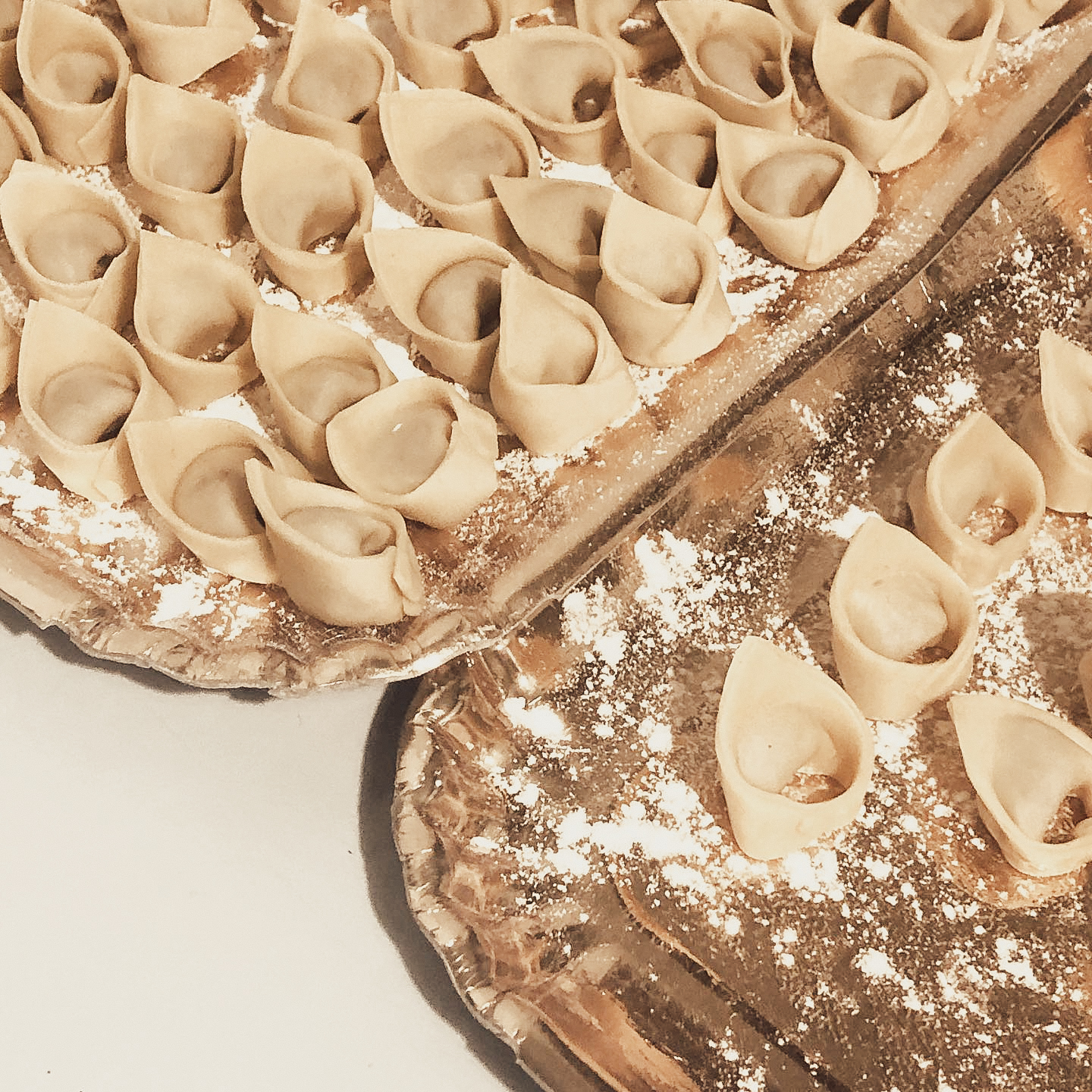 |
Finally, the traditional Sardinian pasta known as fregola, “which Margherita makes by mixing semola flour and water in a terracotta bowl so it takes on a little globe shape. We roast it in the oven and cook it as a risotto, and right now we’re serving it with squid and mussels—so delicious!”
The good vibes from the dinner table extend all the way into the kitchen.
“We were fed up with the nasty dynamics of the restaurant industry and wanted to play our part to make a change,” Faguioli says. “We’re based in Nørrebro, where there is a big BIPOC and LGBTQAI+ community, and it’s fundamental to us to offer a space that honors the neighborhood.”
“We try to hire a diverse and inclusive team and create a safe space for them and our guests.”
Best for: “Either with a big group of friends sharing a lot of food, wine, and negronis, or with a partner for a casual meal, enjoying the conversation with the Casamadre team or the people at the table next to you.”
Casamadre
Tagensvej 67
2200 København N
 Connection by Alan Bates
Connection by Alan Bates
British chef Alan Bates has the kind of pedigree that culinary superstars dream of: from The Fat Duck in Berkshire, England, to West Jutland’s two-Michelin-starred destination inn, Henne Kirkeby Kro. But his eponymously named restaurant in Østerbro—a mere 16 seats around two chef’s tables and a single service per evening—is less of a typical celebrity showcase, more an intensely personal expression of what luxury hospitality can be. This is as intimate as fine dining gets.
“I have always wanted to add my personality to the restaurant experience,” Bates explains. “The dishes, the music, and the rest of the Connection experience reflect my own good memories, and I wanted Connection to be like getting invited into someone’s home.”
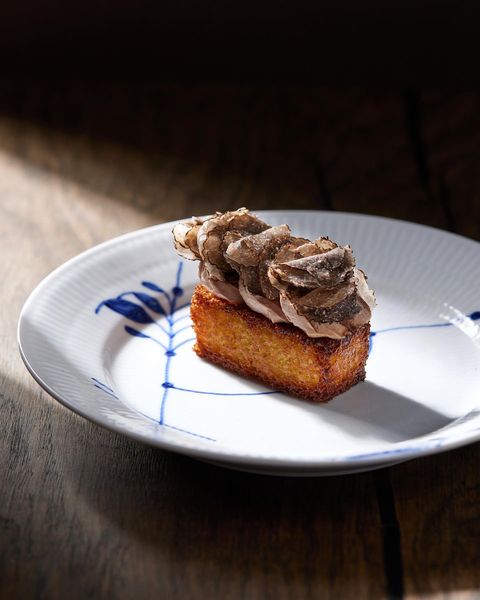 |  |
 | 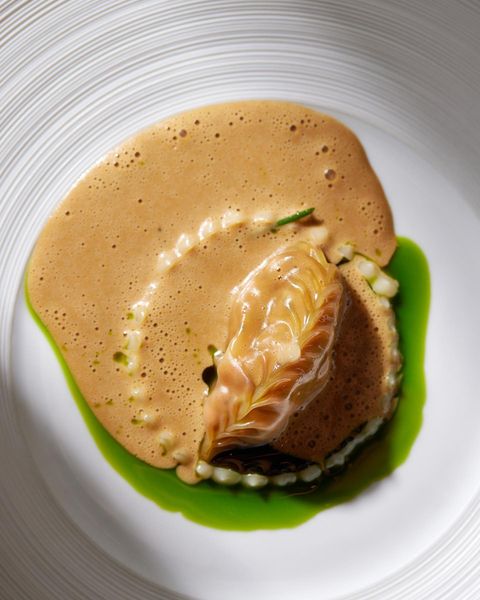 |
Above: Images by Chris Opander Tonnesen
The passion and idealism that Bates infuses into his project are evident in every aspect of the business. In keeping with the name he chose, the curation of the restaurant’s atmosphere is all-important. Thick velvet curtains create a cocooning effect for both conversations à deux and impromptu chats with other diners. Comfortable leather chairs contrast with the chef’s tables, which manage to be both rough-hewn and refined.
“Connection is about the guests connecting with each other while they are here,” says Bates. “When you close the curtains and close out the rest of the world, it does something special. People are rarely on their phones. They are less distracted because the room is like it is.”
Having a nine-course, single-seating menu affords Bates the flexibility to experiment with “crazy flavor combinations” such as the so-called cowboy toast (brioche with foie gras, ice wine vinegar, and truffles). The decadent offering is one of Bates’s signature dishes, along with a chawanmushi paired with everything from grilled Danish squid to a sauce of phytoplankton and caviar, depending on the season. Other courses evolve even more frequently to capture the best of the current bounty. “I’m really looking forward to spring, when Torben at Varde Ådal has his lamb ready,” Bates says.
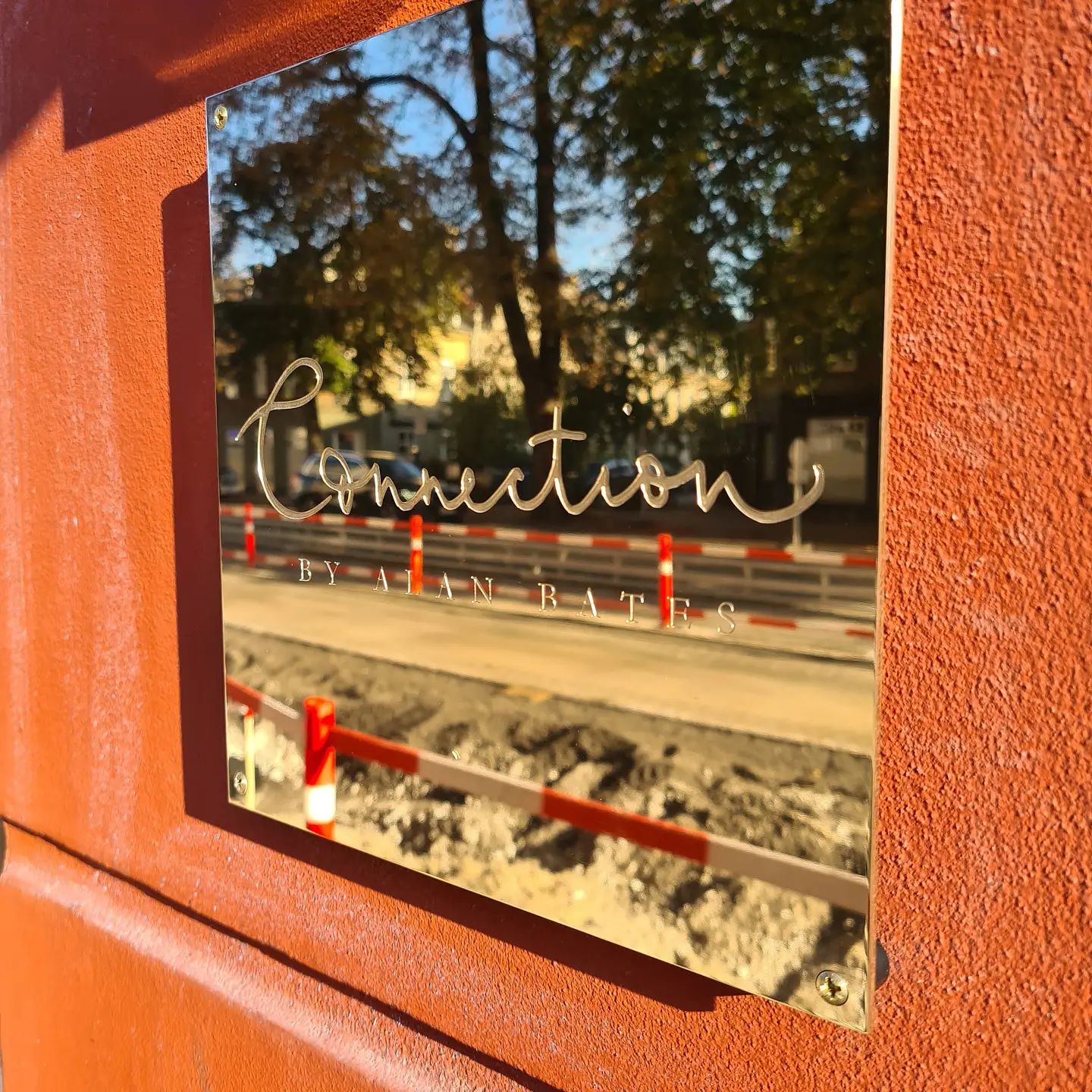 |  |
How does working with a small and trusted team compare to running a bigger operation? “It’s a million times better. Everyone is cherry-picked to be here. If mistakes are made, they are corrected immediately, and we can be open and honest with each other,” Bates explains. “There’s no bullshit, no boys’ room mentality. We are all one team—the chefs are polishing glasses, for example. We start and finish together as a team.”
True to Bates’s own set of values, he takes a no-tolerance policy toward the darker side of the restaurant world. “The fact that these ‘old school’ practices still exist holds the development of the industry back. It’s no wonder there is a staff shortage,” Bates says. “I want Connection to be an example of what the workplace of the future could look like: with a happy and cohesive team, where staff are given a platform to be collaborators and contribute in a meaningful way. In short, an emotionally safe space.”
Best for: A special-occasion meal that marries classical fine dining with a highly curated yet convivial atmosphere.
Connection by Alan Bates
Øster Farimagsgade 18
2100 København Ø
 Delphine
Delphine
A sun-kissed summer holiday on the Greek archipelago isn’t always the easiest thing to evoke in the midst of a Copenhagen winter. Thankfully, there’s Delphine, whose stylish surroundings and Mediterranean menu call to mind a seaside oasis on busy Vesterbrogade.
The latest eatery from restaurant group Cofoco features crowd-pleasing plates such as grilled lamb skewers; crudo of cod with pickled chili; and a whole salt-baked turbot (order at least a day in advance). “Greek-inspired food has long been underrepresented in Copenhagen,” says Caroline Fehrn-Christensen, Cofoco’s Head of Communications. “We wanted to represent the kitchen in a contemporary, updated, and flavorful way.”
 | 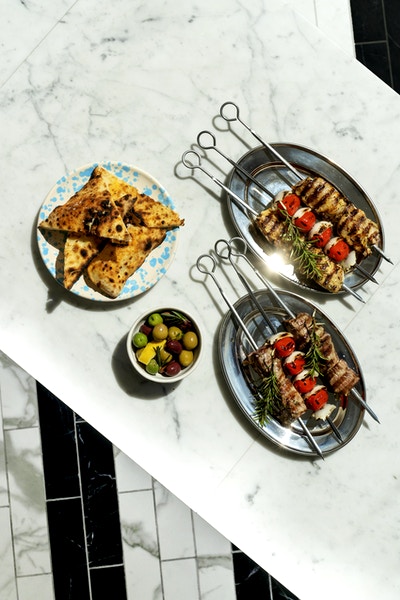 |
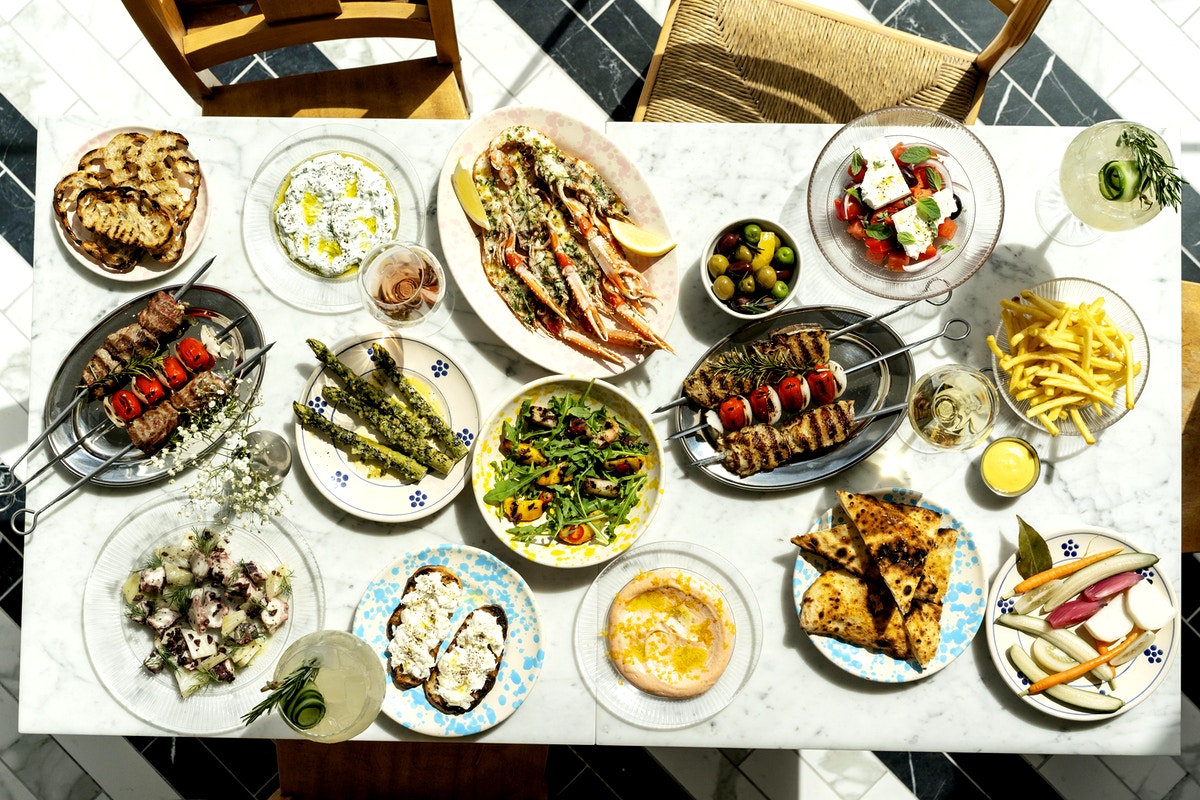 | |
Particularly noteworthy are a series of light, snackable spreads that are ideal for sharing with grilled flatbread and a bottle of Peloponnese white wine. There’s a tzatziki with cucumber and lemon; the pea and ricotta, bright with the flavors of basil and mint; and the taramasalata—”a traditional dip made from cod roe, which is hugely popular in Greece,” Fehrn-Christensen explains. For dessert: a fresh and creamy Greek yogurt sorbet, topped with olive oil and sea salt.
 | 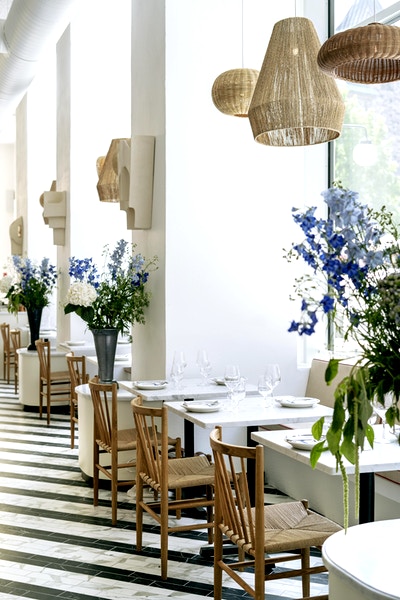 |
In keeping with the mindset of a Mediterranean beach escape, interiors are awash in shades of blue, white, and cream. Design team Tonen Agency collaborated with artist Magnus Vind on the eye-catching murals, and sourced clay lamps from French sculptor Guy Bareff along with handcrafted lights of soft bamboo and woven sisal from Ay Illuminate. A mix of wood and upholstered seating adds life against confetti stone tables from KORP Studio, while carved and backlit wall niches feature ceramic pieces with a heightened sense of drama. You’d almost expect to catch Maria Callas sweeping in from her yacht.
Best for: A group celebration featuring the restaurant’s family-style menu—a selection of 12 dishes to share.
Delphine
Vesterbrogade 40
1620 København V
 Esmée
Esmée
The opulence of the French Belle Époque comes to life on Kongens Nytorv in the landmark space that once belonged to Geist. But Esmée is more than capable of filling such gastronomic shoes. Charismatic chef Andreas Bagh and Peter Pepke, the restaurant’s GM and wine director, have created a fantasy of a modern brasserie that welcomes both casual grazing at the bar and multi-course dinners that go late into the evening.
 |  |
 |  |
Design firm SPACE Copenhagen (who also worked on Geist) reimagined the spacious interior as a lush garden atrium. Curved wicker light fixtures and cane-backed dining chairs are juxtaposed with forest-green accent walls and leaf-print cushions; plant-filled urns and an antique display cabinet sourced in Italy add patina to the mix. There’s a glass-fronted, double-height wine cellar and a cinematically lit bar, paneled in high-gloss plum. The effect is like visual catnip—it’s almost impossible not to look radiant in these surroundings.
 |  |
The food leans well into the luxe side of things. Bar bites—gougeres with Comté and truffle, jamon iberico and Gruyère on toasted brioche—are designed to complement a creative cocktail list with whispers of Belle Époque influences. (The virgin cocktails are equally interesting and esoteric—a trend we’d like to see more of around town.) The Instagram-ready seafood platters feature a selection of oysters with blush-colored mignonette, peel-and-eat shrimp, grilled langoustines, and Norwegian scallops served in the shell. Even the seasonal soft-serve is presented in exquisite fashion in a dainty silver coupe.
Best for: A leisurely, splurge-on-seafood weekend brunch with all the hedonistic trimmings.
Esmée
Kongens Nytorv 8
1050 København K
 Homeland Brasserie & Cafe
Homeland Brasserie & Cafe
This is the authentic little Vietnamese spot of our dreams—the kind of place we keep in our back pocket for dreary winter days when only a succulent bowl of pho can get us going. On a low-key stretch of Frederiksberg, the spotless family-run Homeland Brasserie & Cafe lures the local lunch crowd with three kinds of steamed bao buns (our vote goes to the crispy breaded chicken, accented with crunchy, spicy-sweet vegetables) and savory golden crepes (bánh xèo), made with rice flour and filled with shrimp, char siu pork, and fresh herbs.
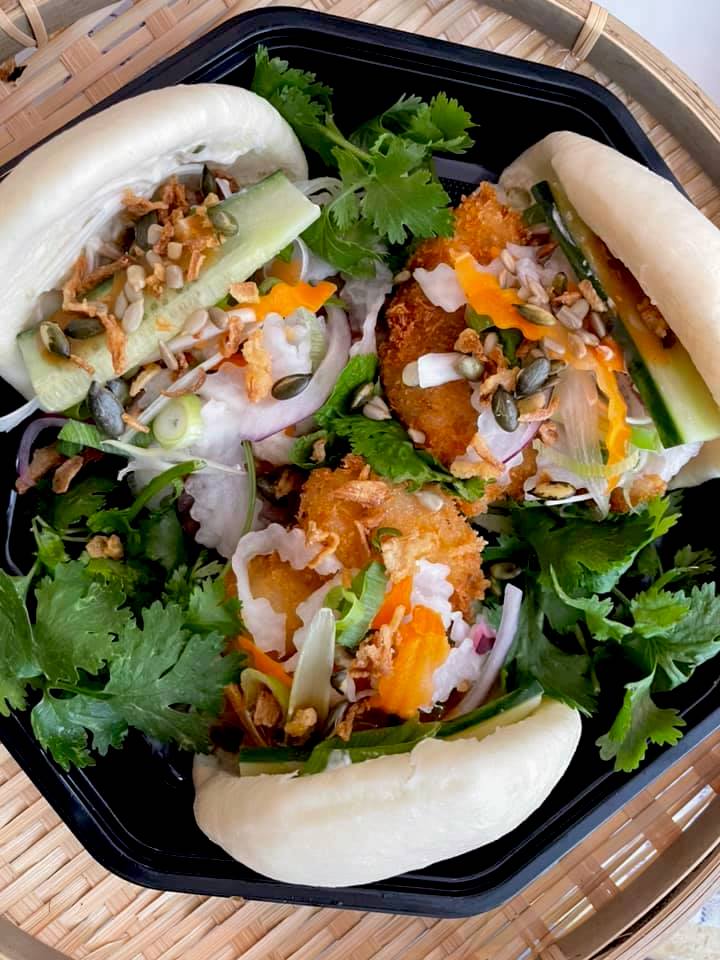 |  |
Veteran chef Vinh Hien Do, who runs the kitchen, turns out generous platters of Vietnamese tapas—sugarcane shrimp, delectable fried spring rolls—that are sure to be the stars of any office party.
Craving some serious comfort food? Look no further than the bò kho (Vietnamese osso buco), long-simmered in a fragrant broth and mopped up with a baguette or a serving of rice or noodles.
 | 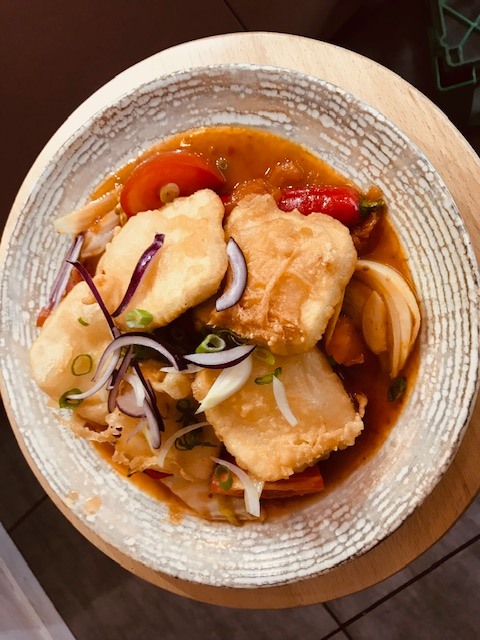 |
 | |
And then there’s the pho bo tai, the meal equivalent of an enveloping hug. Spice up the classic soup further with the accompanying condiments and red chiles, and you’re bound to stay toasty on your bike ride home.
Best for: A heartwarming lunch of homey, vibrant flavors, finished with a cup of Vietnamese coffee.
Homeland Brasserie & Cafe
Nordre Fasanvej 158
2000 Frederiksberg
 Jatak
Jatak
When Rene Redzepi proclaims on Instagram, “This place is gonna go ballistic. You should book now,” paired with a shot of a sensuous, quivering Hong Kong egg tart, a tidal wave of reservations is practically guaranteed. And so it has been for Jatak.
The acclaimed venture from Canadian-born chef Jonathan Tam (formerly of Relæ) opened its beta run in January with a menu that weaves influences from modern Cantonese cooking with a variety of other inspirations, including Tam’s training at some of Copenhagen’s finest kitchens and a summer residency spent at the groundbreaking Blue Hill at Stone Barns in upstate New York.
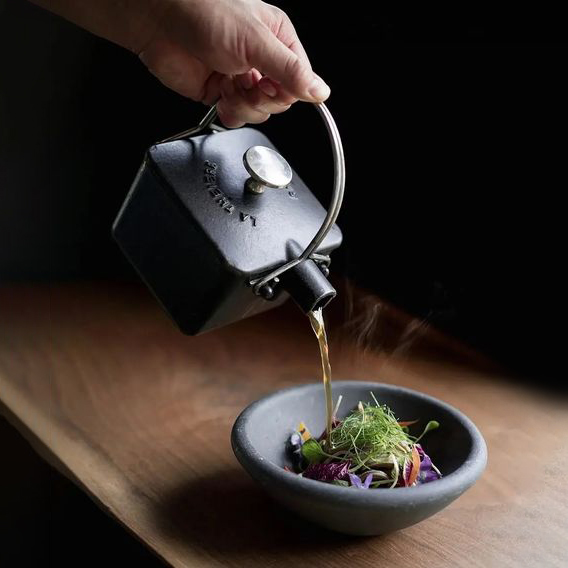 | 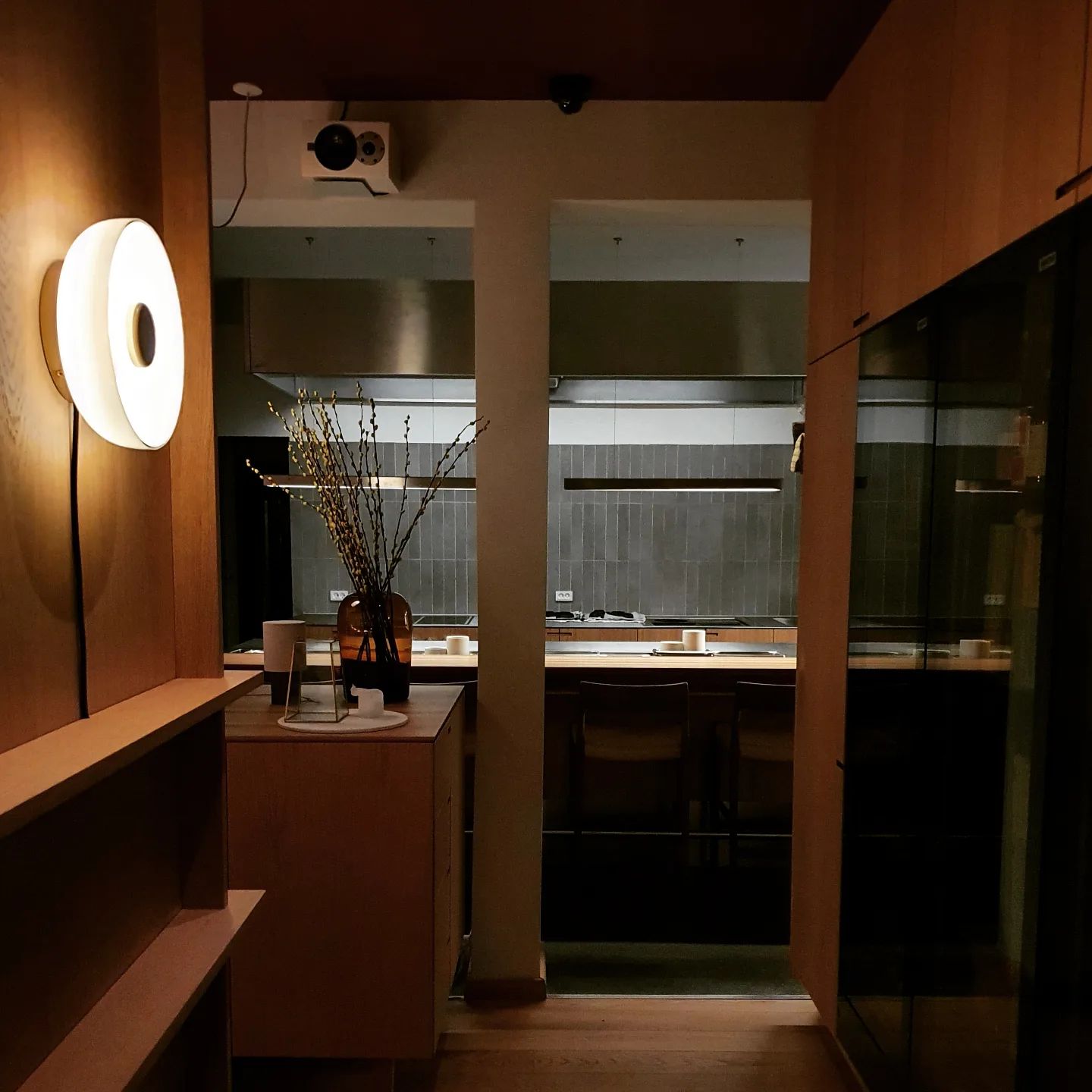 |
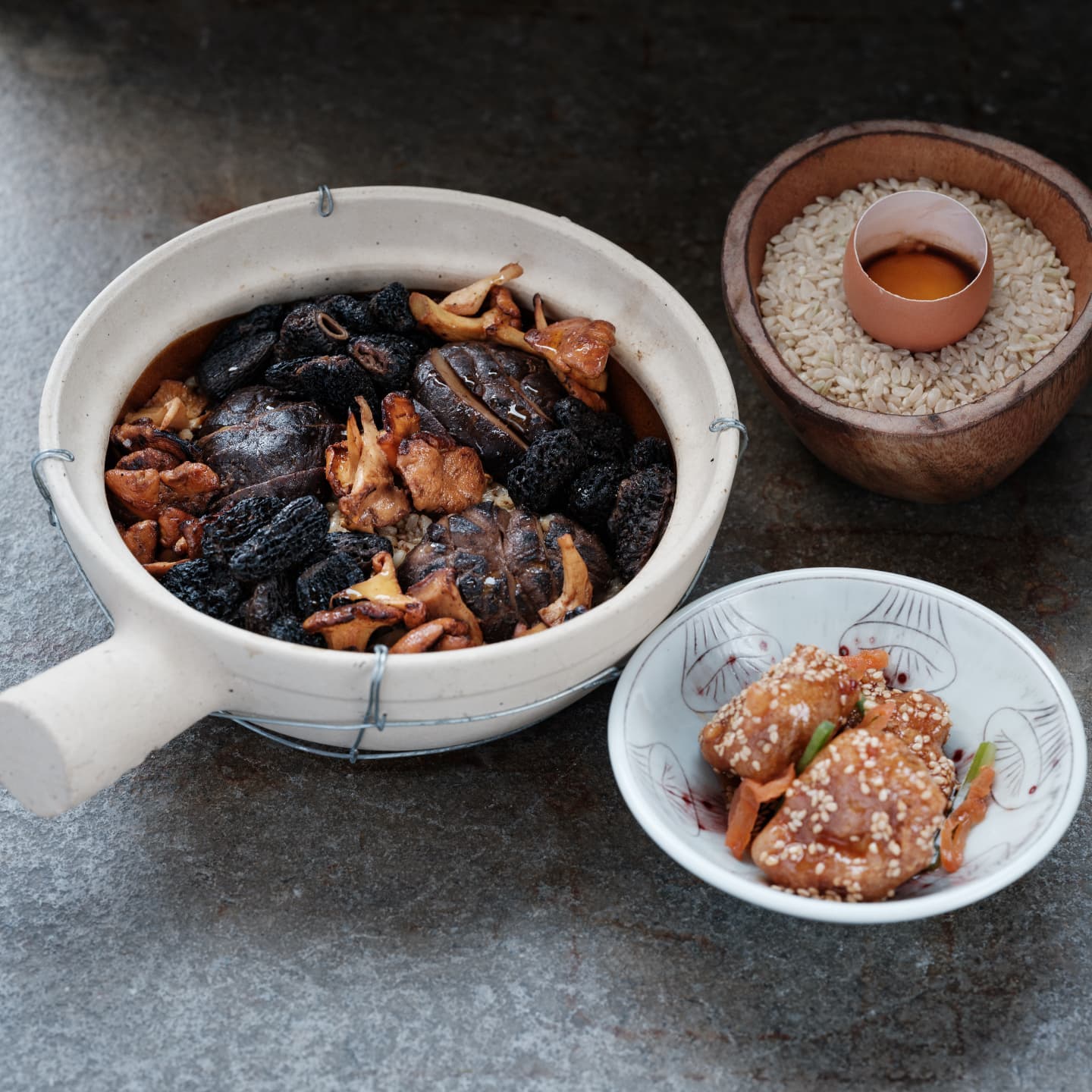 | 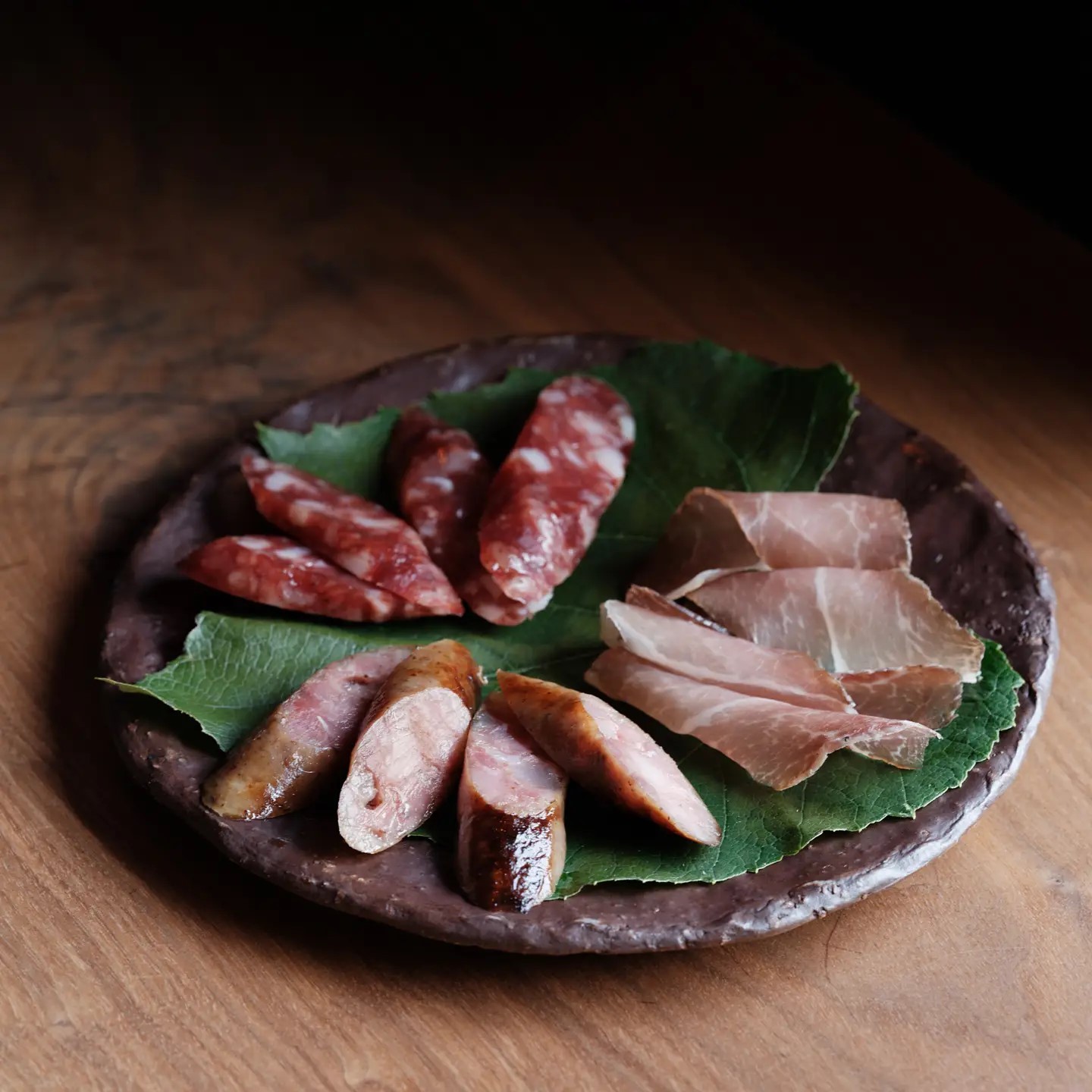 |
Tam’s wife and business partner, architect Sarah Frilund, oversaw the renovation of the former Gilt cocktail bar into a sleek and streamlined space that complements the subtle star power of the food. Recent menu items include a delicate endive dish almost reminiscent of enoki, as well as Tam’s version of a traditional fried Chinese cruller; raw perch wrapped with leeks; and a magnificent, melt-in-your-mouth char siu. Finally, there’s the famous egg tart, which seems destined to be one of the year’s most photographed desserts. With an all-star team behind him and more than a few surprises up his sleeve, Tam is setting the pace for the city’s dining scene to follow.
Best for: Bragging rights for having dined at Copenhagen’s most buzzed-about spot (if you can get in!).
Jatak
Rantzausgade 39
2200 Copenhagen N
 Kuku
Kuku
Wonderfully complex yet expertly balanced, the distinct flavors and textures of Iranian cuisine have found their way to a food truck near Nørrebro Station—and the Copenhagen dining scene is all the richer for it. Music-industry veteran Sean Pakbaz is the one-man force behind Kuku, whose concise menu and no-frills takeaway presentation nevertheless open up an extraordinary (and often unfamiliar) world of food traditions.
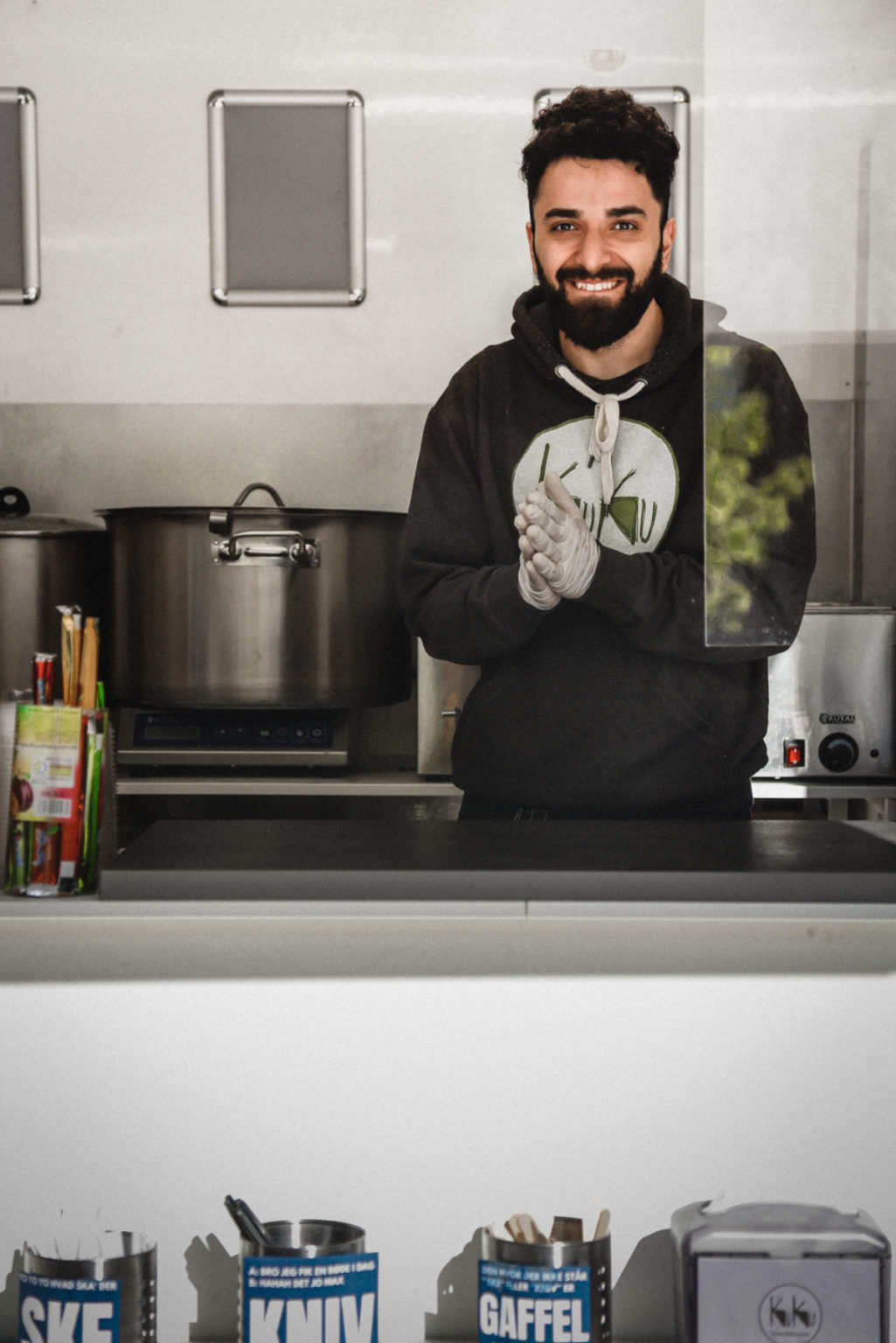 |  |
A self-taught cook, Pakbaz came to Denmark as a child and found himself craving the multifaceted dishes from back home: sumptuous, grandmotherly casseroles redolent of fresh herbs such as fenugreek and mint, often served with a tangy dollop of cucumber-yogurt sauce or on a bed of pillowy saffron rice.
With Kuku, he’s captured that Proustian yearning in the form of three main dishes, all of which can be made vegan.
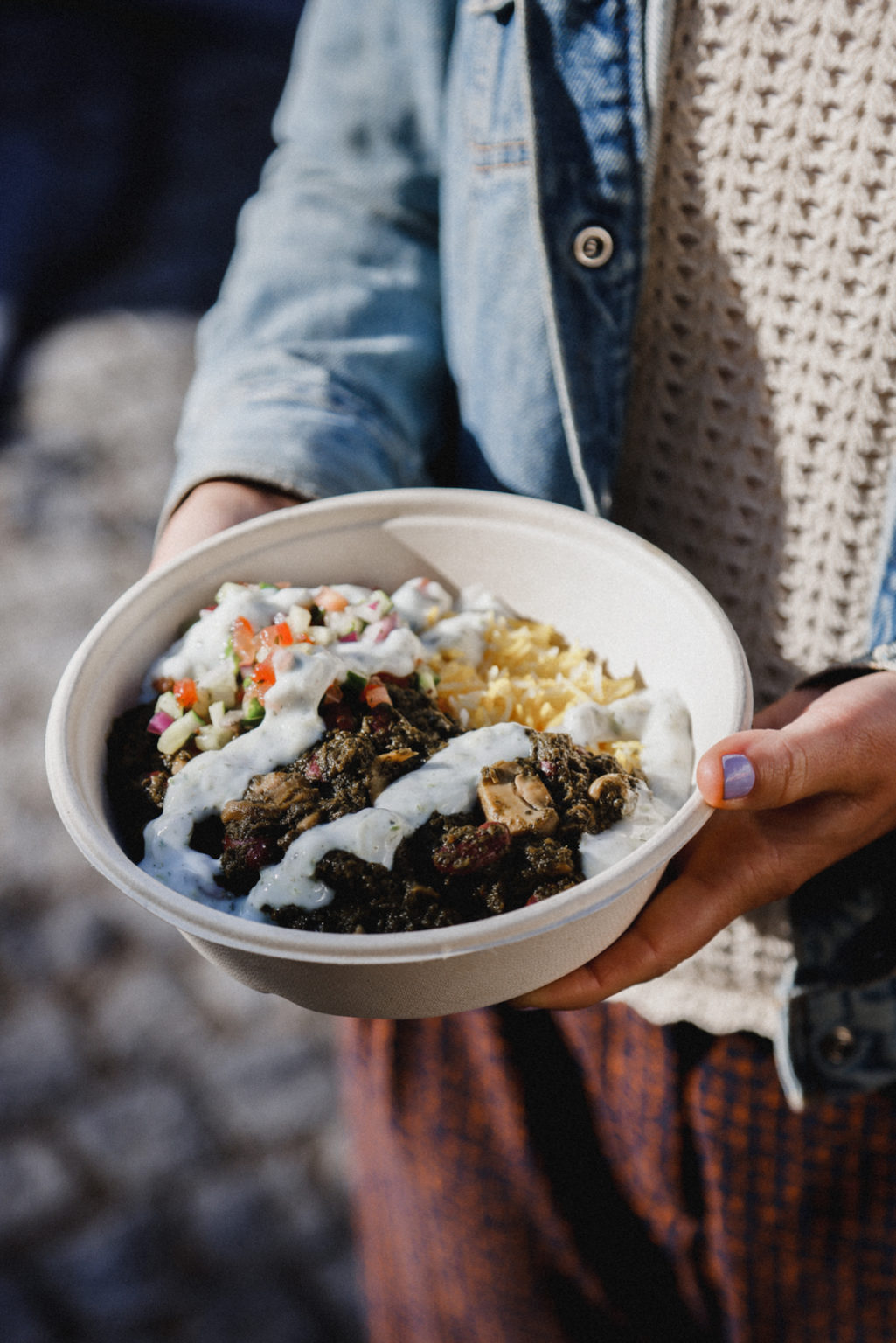 |  |
There’s Ghorme Sabzi, often known as Iran’s national dish, an aromatic stew of red kidney beans and tender beef; a vegetarian noodle soup called Ash Reshte, topped with caramelized onions and the feta-like kashk; and our favorite, Gheyme Badenjoon, where silky fried eggplant tops a base of yellow split peas cooked in tomato and turmeric. Sample all three by ordering the snack-size trio (a steal for 89 kr.), and grab a saffron-pistachio rice pudding as a mid-afternoon sweet treat.
Best for: A weekday lunch escape that doubles as a delicious cultural immersion.
Kuku
Lygten 2C
2400 København NV
 Otto
Otto
“We love Amager,” says CEO Christian Brandt of his third and latest installment of the popular Otto Pizza, located on up-and-coming Strandlosvej. “Even though we opened on a cold and rainy November evening, the place was full of people. We couldn’t have wished for better support from our neighbors and community.”
The love affair is clearly reciprocal. Fans of the brand’s Neapolitan-style pizzas, with their addictive crusts (look for the puffy, raised edges and blistered “leopard” spots), come for a lunchtime bite or a post-gym dinner. The more prescient will stop in before a big night out for the Heat at Home pizzas, which can be kept in the fridge and thrown into the oven for a few minutes the next day—the perfect hangover food.
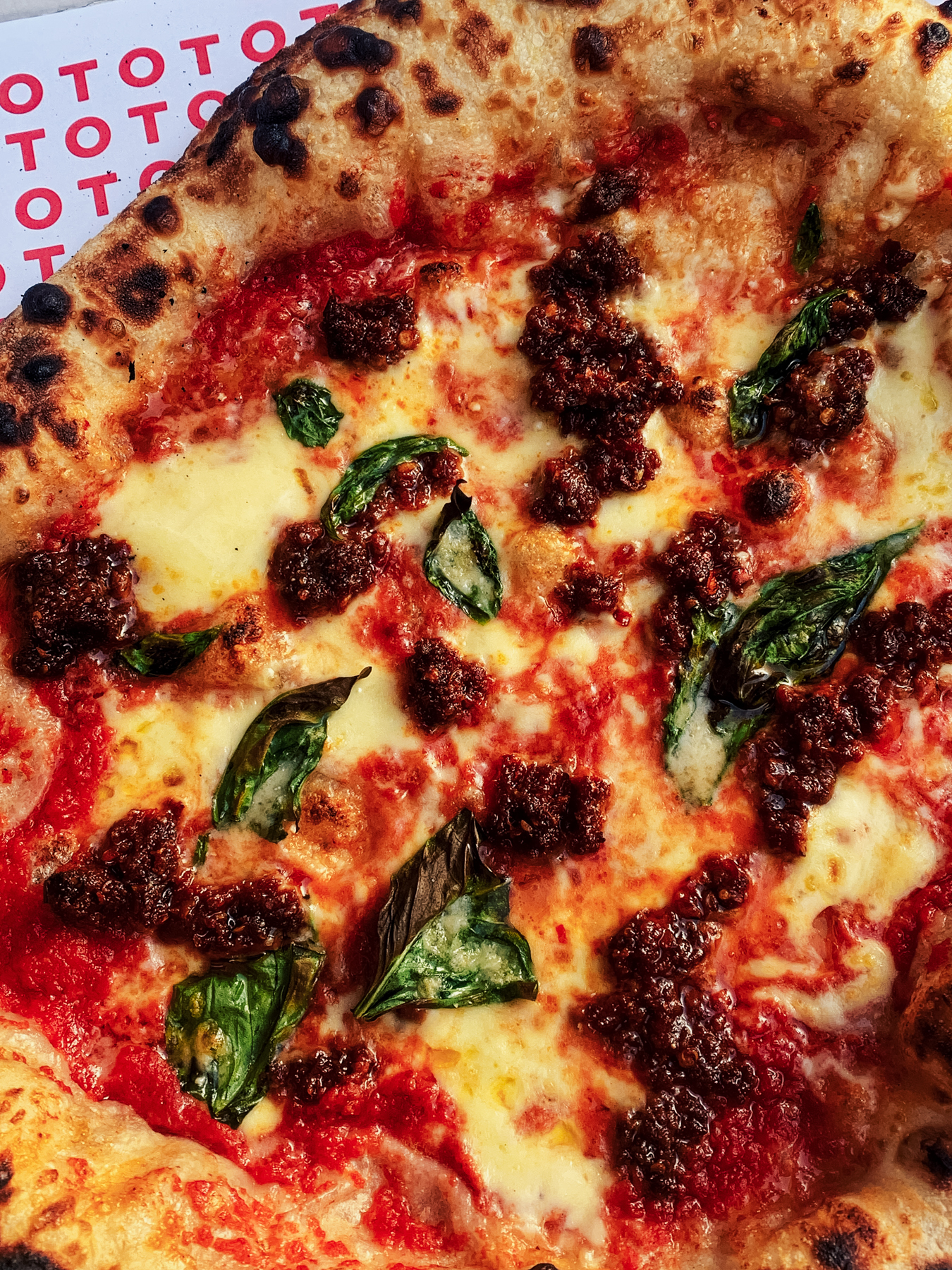 |  |
“We spent a lot of time working on our homemade pizza dough. It’s the most important ingredient we have at Otto,” says Brandt. “Our founder [former Michelin-starred chef Rasmus Oubæk] worked in his test kitchen for months to see, for example, if the dough was best after 24, 48, or 72 hours of rising. Right now we’re working on opening a bigger and more professional dough facility, but it will still be our own production.”
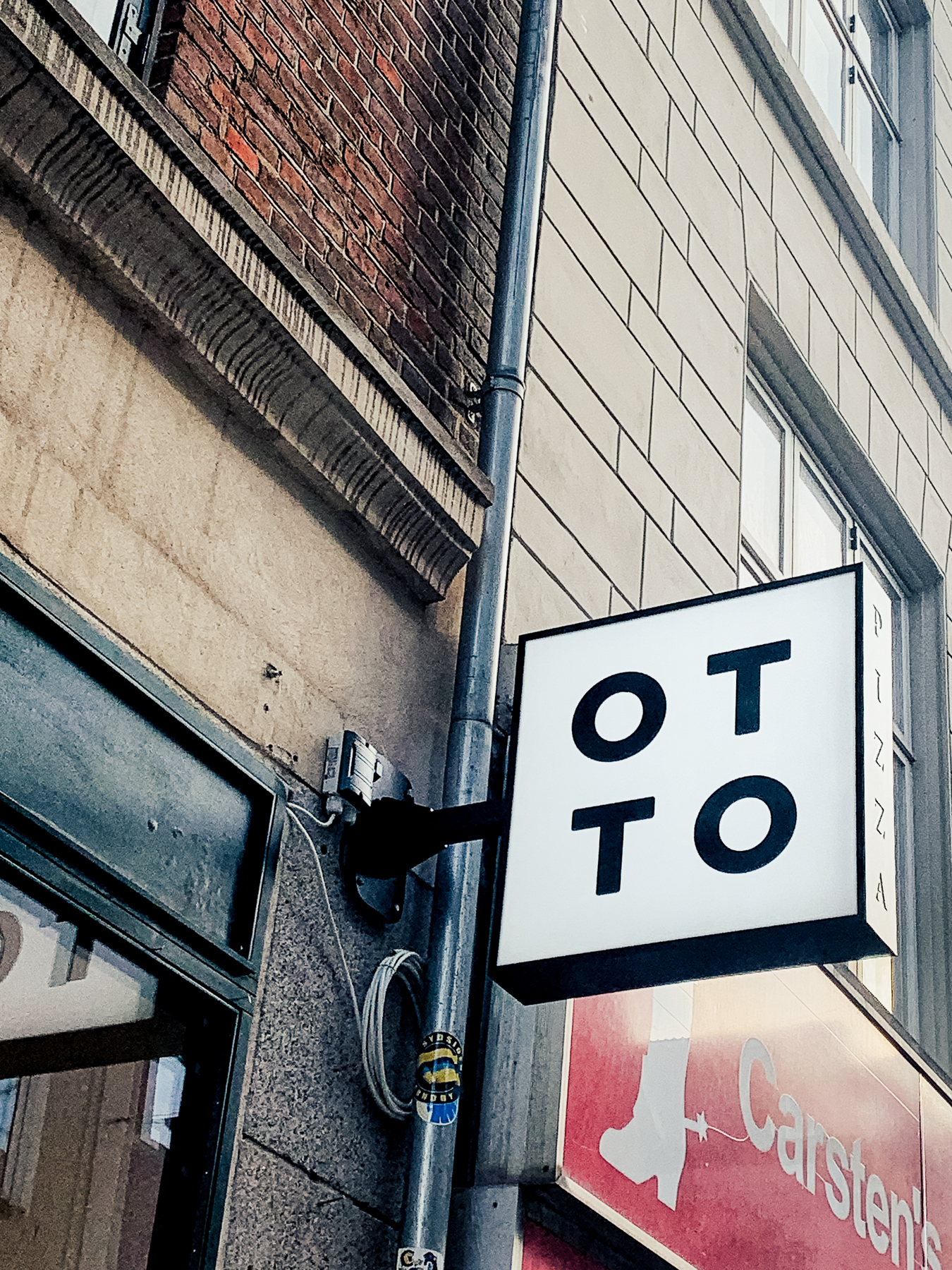 |  |
Brandt’s personal favorite on the menu? “Our number 9—a pizza without tomato, but with our mascarpone cream, olives, and mortadella. A more unusual one is number 7, with Tuscan kale and mushrooms; it might sound strange, but Tuscan kale tastes so good on a pizza. And of course you can’t go wrong with our classic marinara (number 1) with extra stracciatella.” Wash it all down with Otto’s organic lemonade and homemade tiramisu, from Oubæk’s own recipe—and look for the fourth location of Otto, opening soon at Rådhuspladsen.
Best for: Pizza night and a movie in the comfort of your own home.
Otto
Strandlodsvej 15A
2300 København S
 Propaganda
Propaganda
Even on a blustery Friday evening in one of the coldest months of the year, Propaganda hums with an infectious energy. “Don’t Sweat the Technique” plays over the speakers; tables of young, well-dressed diners jostle and joke with the team of cooks behind the counter at the open kitchen. Smack in the middle of the city where Frederiksberg and Vesterbro meet Tivoli and Central Station, the unpretentious kitchen and bottle shop exudes a house-party vibe: the kind of spot where you’re licking chili glaze off your fingers while your friend pours you another glass of a superb Sicilian white. No wonder that in just a few short months, this has become one of the hottest dining destinations in town.
Such an atmosphere comes courtesy of Propaganda’s cofounder, Riccardo Marcon (also of Barabba), who partnered with gifted Korean chef Youra Kim to create the casual eatery of his dreams.
“What I wanted was a place that wasn’t a typical sit-down restaurant,” Marcon says. “Having a kitchen in the dining room is the ultimate step to cutting down the barrier between front and back of house. Here, there is no huge division. We are more of a team than I have ever experienced before.” Head chef Kim concurs: “We play the music we like, we enjoy the scene, and I think everyone who comes here can feel that.”
 |  |
 |  |
Marcon and Kim were originally introduced soon after she finished her stage at Noma, where the team would rave about the staff meals she cooked. Her confident take on the flavors and techniques of her childhood is a breath of fresh air in a city that often dials down the heat and spice to appease local palates.
“I make authentic Korean food. I’m not really caring about toning down the flavors,” Kim says. Witness the raw brill muchim (“very Korean”), which arrives with radicchio, baby gem lettuces, and nori for wrapping. It’s drizzled with Kim’s precious cache of sesame oil, which is grown, roasted, and pressed on a friend’s family-run farm. “I thought people would be scared of it, since it’s something different. But they love it.”
Among the crowd-pleasers on the menu are the dumplings mandu, which Kim makes daily by nestling a ragu of kimchi and pork into cabbage-shaped dough. “People order one plate each,” Kim says. Then there’s the fried chicken, presented in all its messy glory with the aforementioned chili glaze and a scattering of broken peanuts. But the surprise winner is the side salad: crunchy, spiralized strands of radishes, green papaya, and Asian pear served in a spicy-sweet vinaigrette that gets its depth of umami from the addition of dried shrimp and fish sauce.
 |  |
Open from noon to midnight, Propaganda seamlessly accommodates a range of customers and experiences. It’s plain to see why Marcon is one of Copenhagen’s most legendary hosts. “So much of the vibe comes from my guests,” he says. “We interact with the big wine connoisseur, the foodie aficionado, and the people who work in the offices nearby.”
Above all, as Marcon originally envisioned, Propaganda serves as a versatile meeting spot for a wide cross-section of the city—”and since I live around the corner, I made the sort of place I wanted for myself.”
Best for: Walk-ins sharing an after-work bottle of wine at the counter, or as the kickoff dinner to a blowout Friday night.
Propaganda
Vester Farimagsgade 2
1606 København V
 Silberbauers Bistro
Silberbauers Bistro
Red-checkered tablecloths, a daily menu handwritten on a blackboard, and china reminiscent of Sunday lunch at bedstemors lend Silberbauers Bistro a sweetly old-fashioned atmosphere. But make no mistake—this restaurant is quietly revolutionary in its own way for its memorable point of view on Provencal bistro fare.
 |  |
 |  |
This is destination dining with a distinctly local vibe. Chef-owner Mathias Silberbauer took over the former Manfreds wine bar on Jægersborggade and turned it into a kind of homage to his time spent cooking in Nice, emphasizing quality ingredients and simple preparations over culinary pyrotechnics.
A starter of steamed blue mussels is served cold with generous mounds of aioli. Fried red mullet or buttery turbot is presented on the bone and accompanied by a wedge of lemon, while a rustic pissaladière is made with olives and caramelized onion.
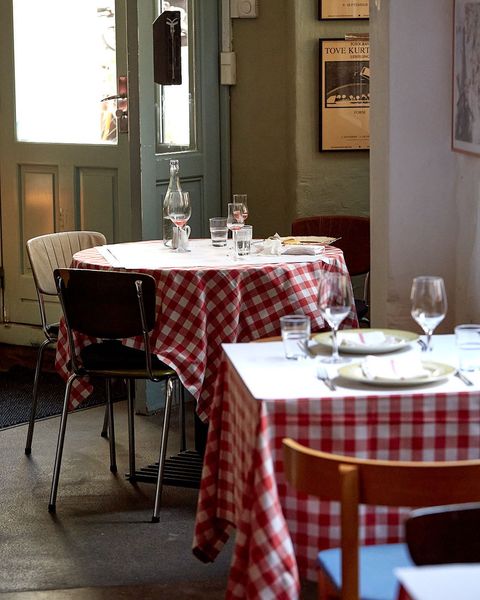 |  |
Desserts provide an indulgent note to end the meal, from a classic soufflé to an oozy baked Camembert garnished with honey and pine nuts. Rather than a once-in-a-lifetime dining experience, Silberbauers is the bistro you could easily come back to every week.
Best for: A cozy supper for two featuring comforting French classics.
Silberbauers Bistro
Jægersborggade 40
2200 København N
Copenhagen Cafes and Bakeries
 Amar’
Amar’
Sweet buns filled with vanilla cream. Plump, lavishly studded almond croissants. And a melt-in-your-mouth citron and meringue tart that makes the perfect accompaniment to an espresso. The restaurant action on Amager’s Strandlosvej strip has heated up with the arrival of Amar’, a bakery and cafe whose simple, clean flavors and irresistible baked goods are drawing the weekend brunch crowd in droves.
 |  |
Pleasant ochre walls and a bright, high-ceilinged space set a laid-back scene (along with the old-school Maxwell and Janet Jackson on the speakers). There’s a short but sweet breakfast menu and a handful of savory lunch items, called håndmad—artfully composed open-faced sandwiches that showcase seasonal ingredients from mostly local producers. The kartoffel håndmad with grilled vegetables and herb mayo is one standout, as is the chicken salad, which comes with a generous helping of greens, crispy bacon, and homemade pickles.
 |  |
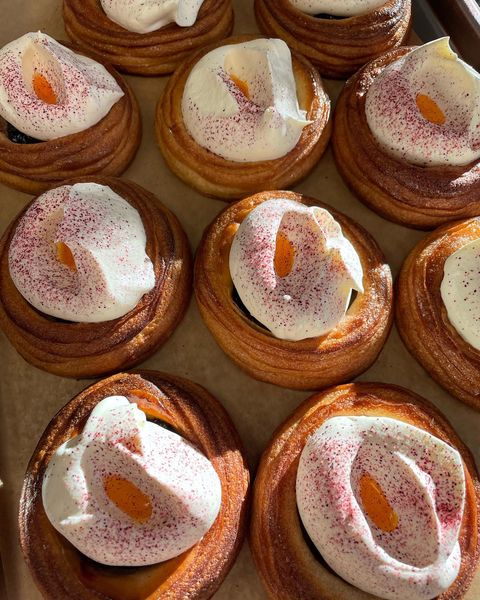 |  |
Young families, canoodling couples, and post-yoga workout buddies give Amar’ a relaxed Amager vibe—although the food is well worth traveling for from the other side of town.
Best for: A laid-back lunch date with a friend you’ve been longing to catch up with.
Amar’
Strandlodsvej 11B
2300 København S
 Collective Bakery
Collective Bakery
First, let’s talk about the citronbølge: a luscious confection made out of leftover croissant scraps shaped around a skewer, then brushed with a fragrant sugar glaze made from the skins of Sicilian lemons. The so-called “lemon wave” is one of Collective Bakery’s signature items—not only for its deliciousness but also for what it represents in terms of a more sustainable form of food production. We’d expect no less from this spinoff of Coffee Collective.
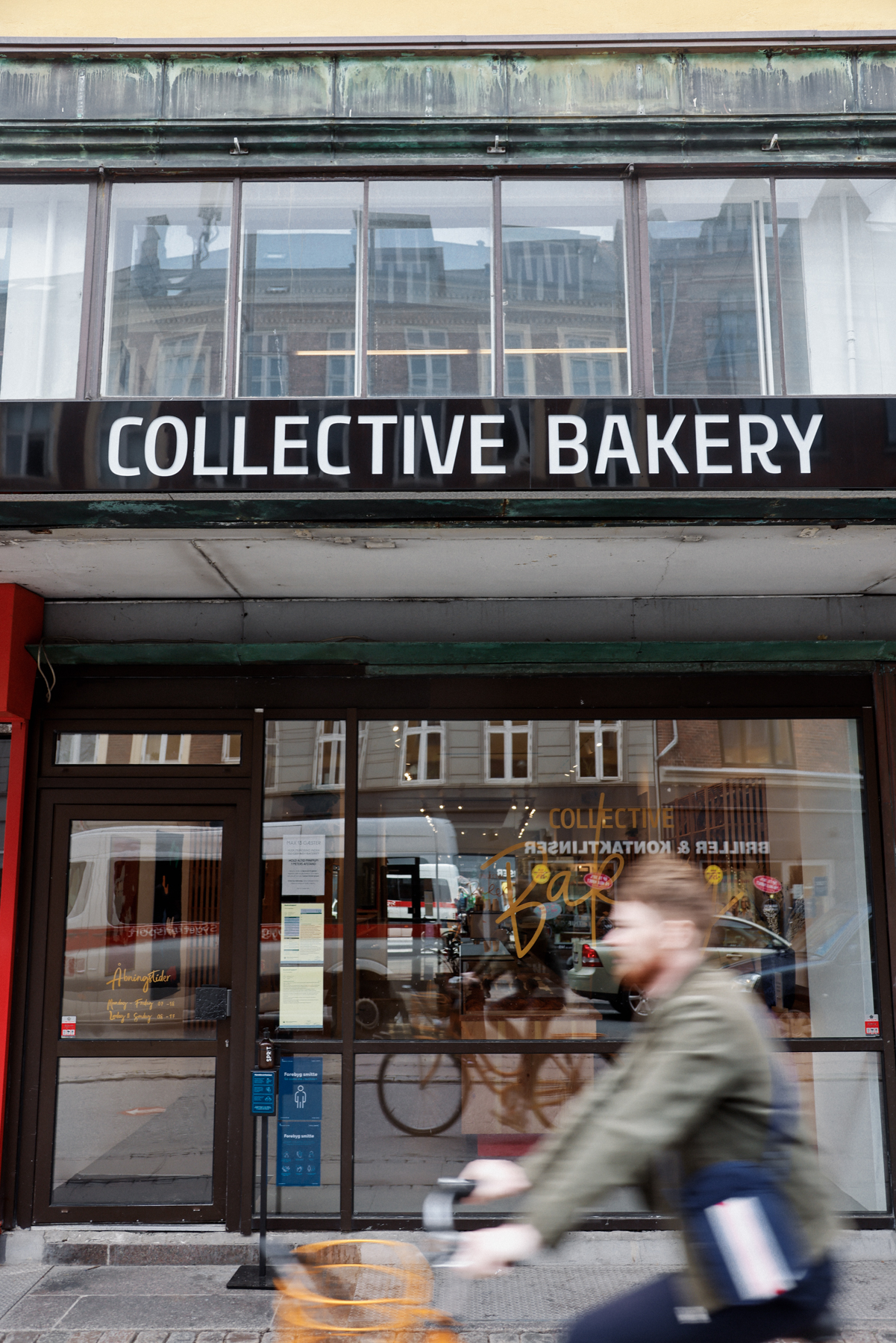 |  |
Even in a city that doesn’t lack for stellar bakeries, Collective’s outpost on a busy stretch of Nørrebrogade is a game changer. Head baker Michael Craig points to the company’s longtime practice of working in close collaboration with their suppliers. “Even though customers were willing to pay a proper price for a cup of coffee, the farmers on the other end were having trouble making ends meet. Often they had to abandon their coffee farms in exchange for more profitable crops,” Craig explains. Cutting out the middleman helped address this imbalance while ensuring the highest quality. “This is the same way we work in the bakery. It’s important for us to have a direct relationship with the producer so we can build on our knowledge, learn from each other, and source the best possible product locally.”
All of Collective Bakery’s suppliers are organic farmers “with like-minded values as ourselves,” and the majority are based in Denmark. Along with flour from Kornby Mølle and Kragegården, special mention goes to the rhubarb and strawberries sourced from the family farm Klippingegård near Stevns Klint. “[Owner] William Perch-Nielsen practices sustainable farming methods that directly align with our values,” Craig adds.
 |  |
As part of the overall drive to reduce waste across Collective’s businesses, knowledge sharing is essential. “We’ve only just started to explore the possibilities of using surplus produce from the [coffee] bars in the [bakery] menu,” Craig says. Two examples: hydrating their rye bread with leftover filter coffee to give it a malt-like flavor, and infusing a version of their maritozzi (Sicilian cream buns) with the liquid and grounds from leftover espresso.
As far as Craig’s ideal way to sample the goods at Collective Bakery? It’s as simple and stripped-down as it gets: “A crust loaf of sourdough bread, still warm from the oven, with a generous amount of butter and a little bit of marmite.”
Best for: A Saturday-morning stop for your weekend haul of freshly baked bread.
Collective Bakery
Nørrebrogade 176
2200 København N
 Dzidra
Dzidra
There’s a warmth and soulfulness about Dzidra that radiates from within. “It started out as Andreas’s big dream—he was demolishing and building night and day, cleaning, fixing, all by himself,” says Isabella Kristensen of the Nørrebro cafe that she and her partner, Andreas Albertsen, lovingly brought to life. “Then it became our dream: a space where everybody can feel welcome while enjoying a cup or a plate of something that has some honesty to it.”
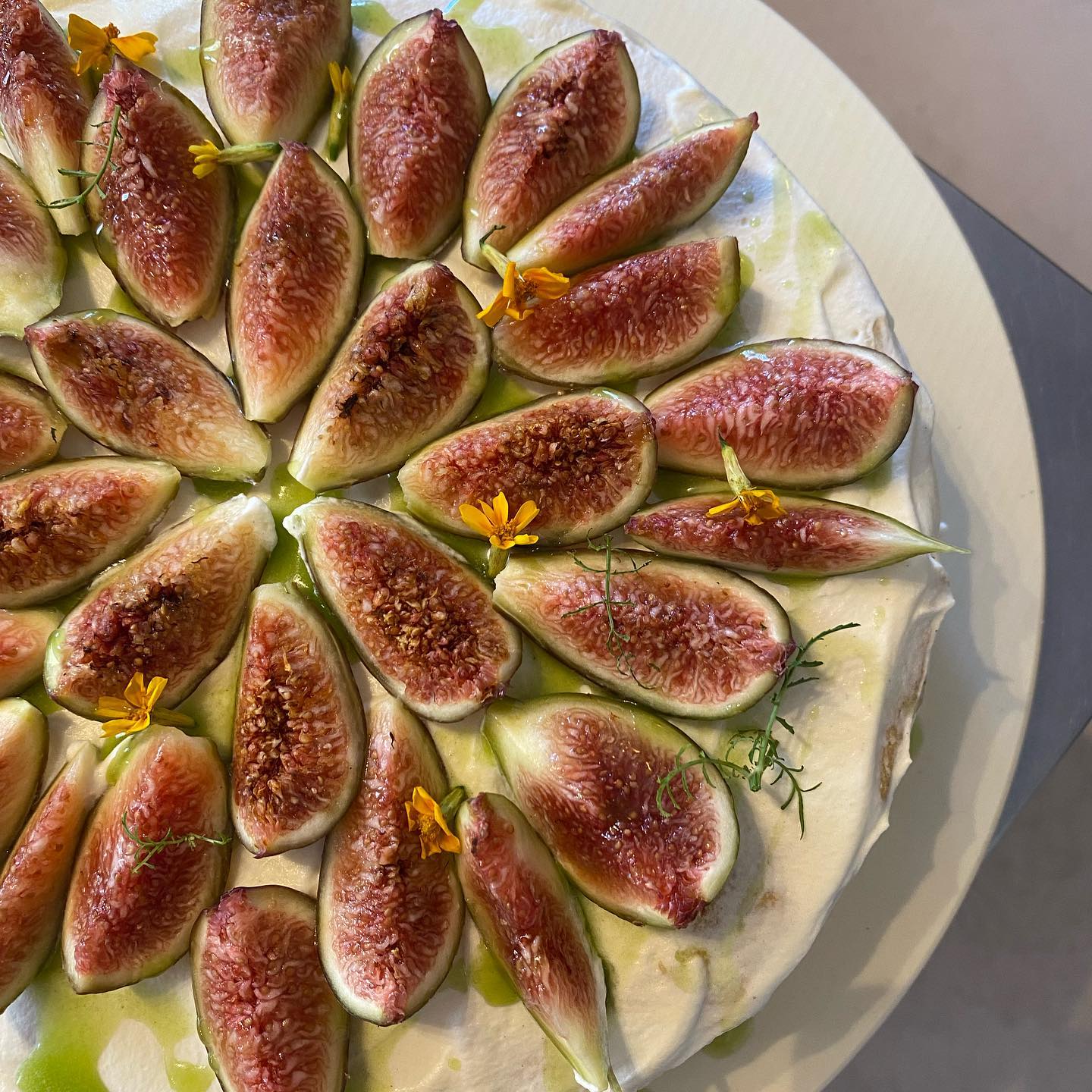 |  |
 | 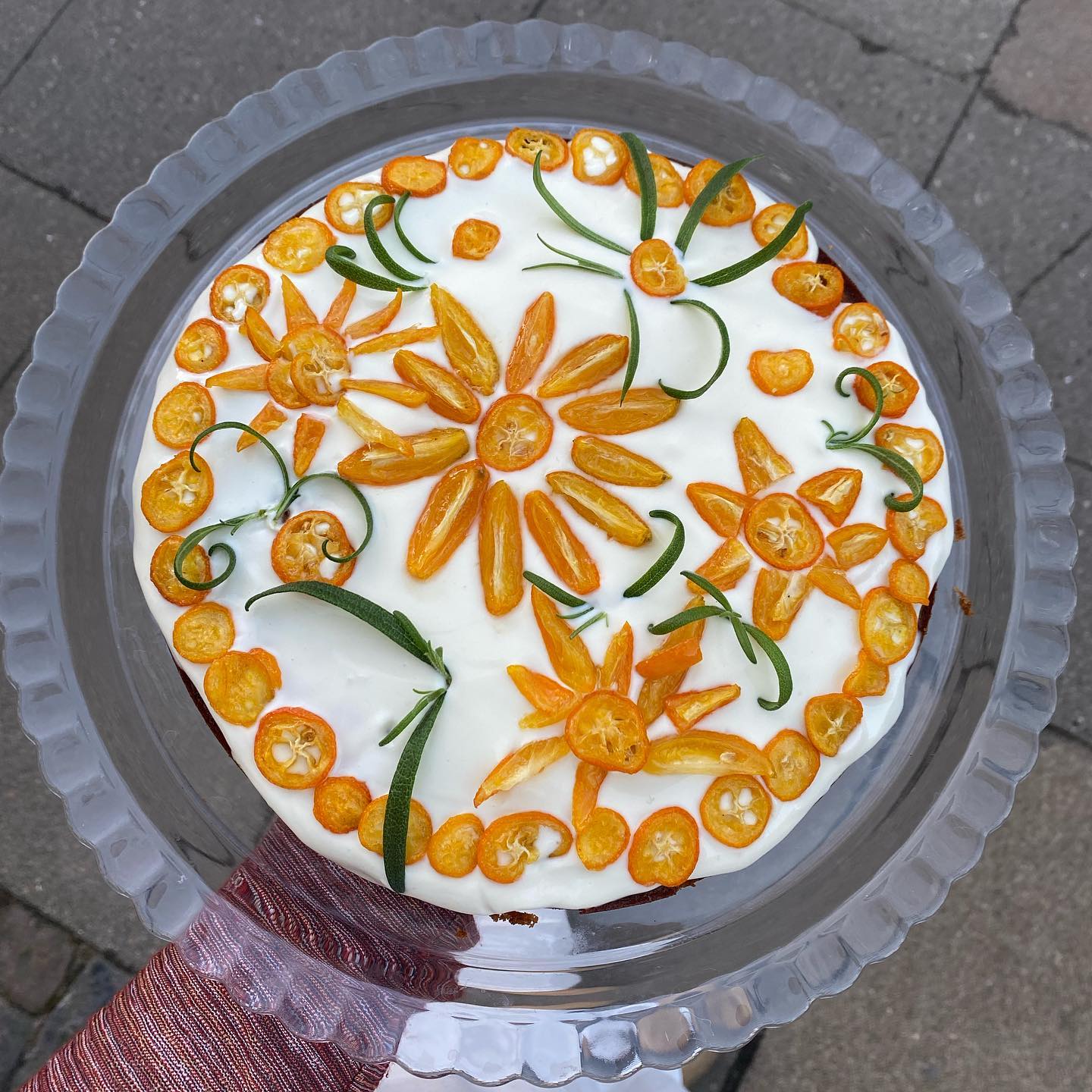 |
From the handcrafted interior, with its vintage woodwork and patinated walls, to the menu of comforting, homey favorites, Dzidra is a paean to simple joys. The food is layered with meaning and nostalgia. Breakfasts might feature a perfectly soft-boiled egg from Søtoftes Gårdmejeri next to Albertsen’s homemade rye bread and jam from his mother’s foraged berries. Lunch, which changes every other week, melds the best of what’s in season with the owners’ inspiration of the moment. “This week I was a bit homesick for Colombian food, so we made ajiaco, a potato-and-chicken soup,” Kristensen says.
The concept of community is central to Dzidra’s mission. The two owners actively nurture the connection between their customers and their suppliers. “It’s not fast, it’s not mass—it’s real people behind the teas we are brewing, and the free-range chicken that lays the eggs you are eating,” Kristensen explains. “I often think about every single coffee bean I work with, and I get sad if I drop one, because I know how the small, bright-red coffee fruit looks and tastes. I know there has been a big process behind every coffee we make.”
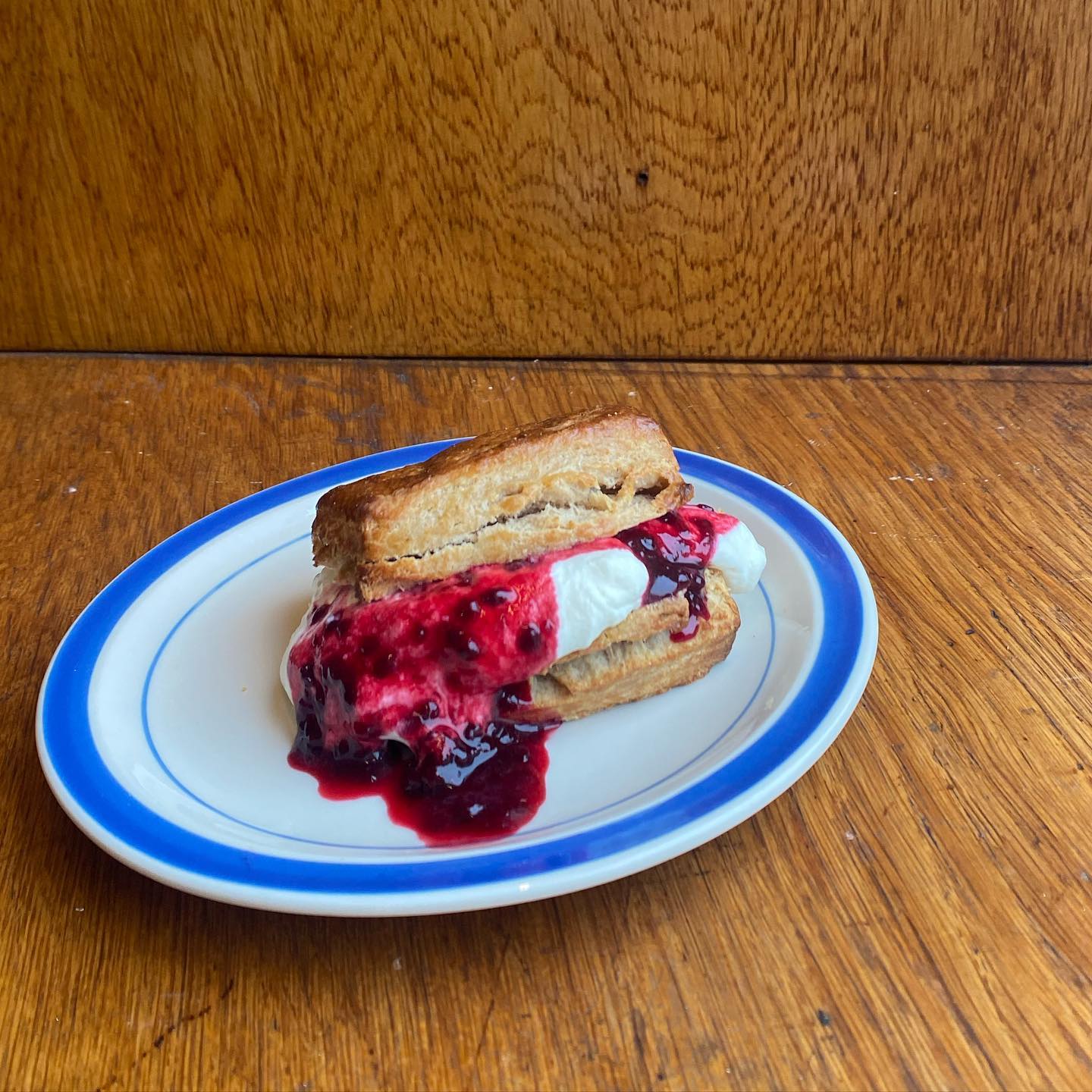 |  |
Named after Albertsen’s spirited Latvian grandmother, who as a teenager migrated alone to Denmark to escape the Second World War, Dzidra creates an ambience to cherish. “To us, the early morning hours are special. You can smell the freshly baked scones come out of the oven, hear the espresso machine grinding, music playing in the background,” Kristensen says. Welcome to the beloved locals’ joint you’d happily linger in all day long.
Best for: A heartwarming meal with all the comforts of home—and don’t miss their cake of the week, including a stunning kumquat, rosemary, and olive oil confection.
Dzidra
Baldersgade 8
2200 København N
Copenhagen Bars
 Conga
Conga
A warm amber glow radiates from the front windows at Conga, giving the retro-styled bar on Guldbergsgade the look of a groovy movie set. Wood-paneled walls and geometric tiles set the scene for a collection of more than 100 vintage light fixtures—from spiral orbs in orange lacquer to star-shaped masterpieces of Danish Space Age design.
 |  |
And the cocktails certainly don’t disappoint: Slide into one of the curvaceous booths clad in deadstock wallpaper from East Germany, and order an expertly balanced Lidt Lakrids, which comes garnished with a ripe passionfruit. Or take your standard gin drink to the next level with the Pello, which combines Tanqueray, Campari, and elderflower liqueur with egg white and lemon.
 |
Sibling to the popular music venue Rust, Conga features an adjoining passageway turned covered outdoor patio, where foldaway tables stand poised and ready for warm-weather fun. Bring your best sense of swagger and big-night-out energy. This is the place to get the party started.
Best for: Pre-show carousing with your mates.
Conga
Guldbergsgade 8
2200 Copenhagen N
Want more of the best Copenhagen restaurants, bars, and cafés?
 |  |  |
 |  |  |
 | 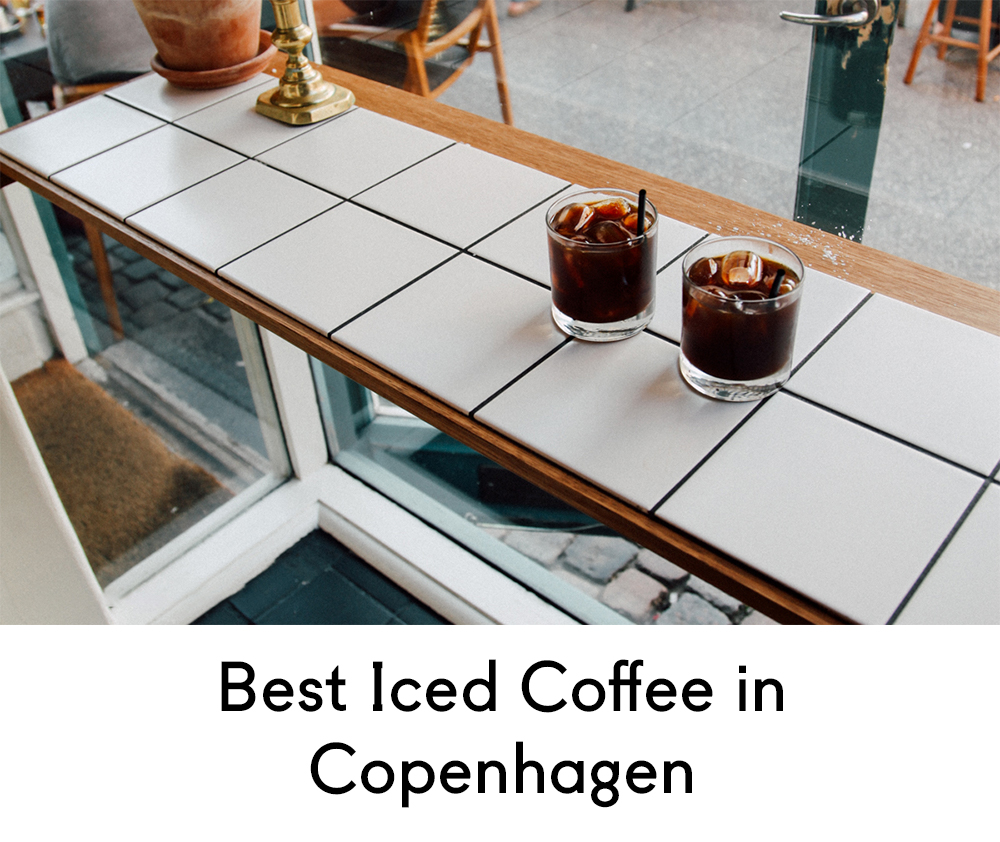 |  |
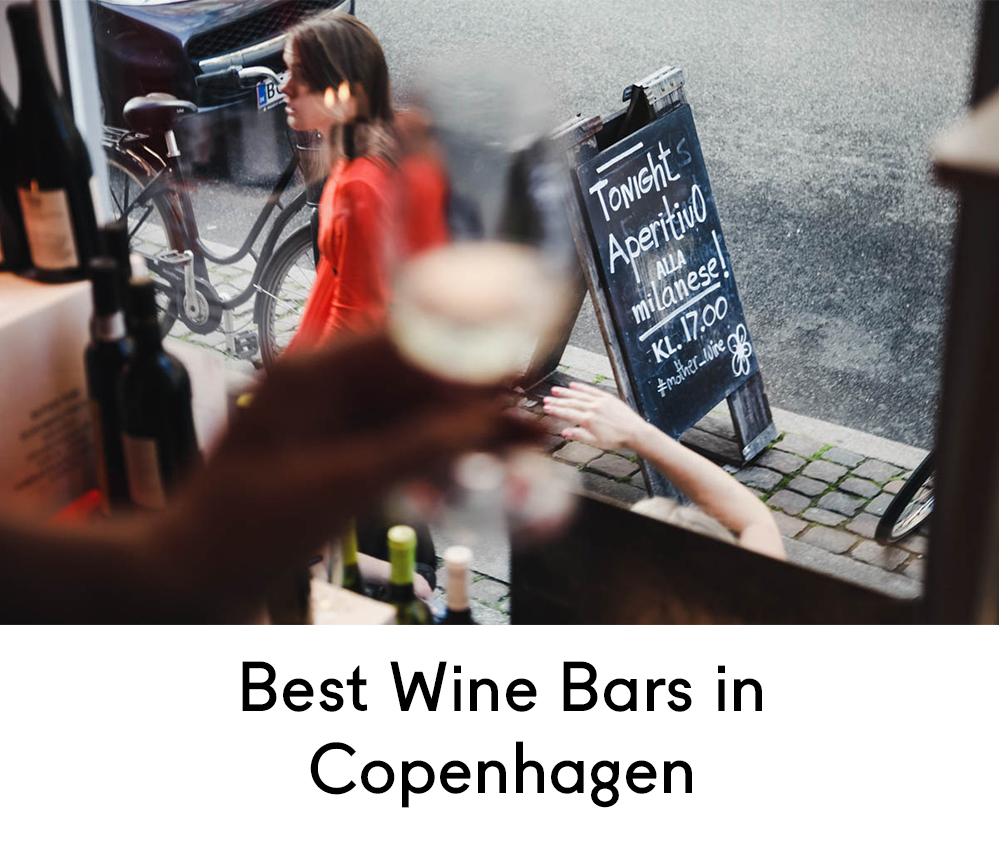 | 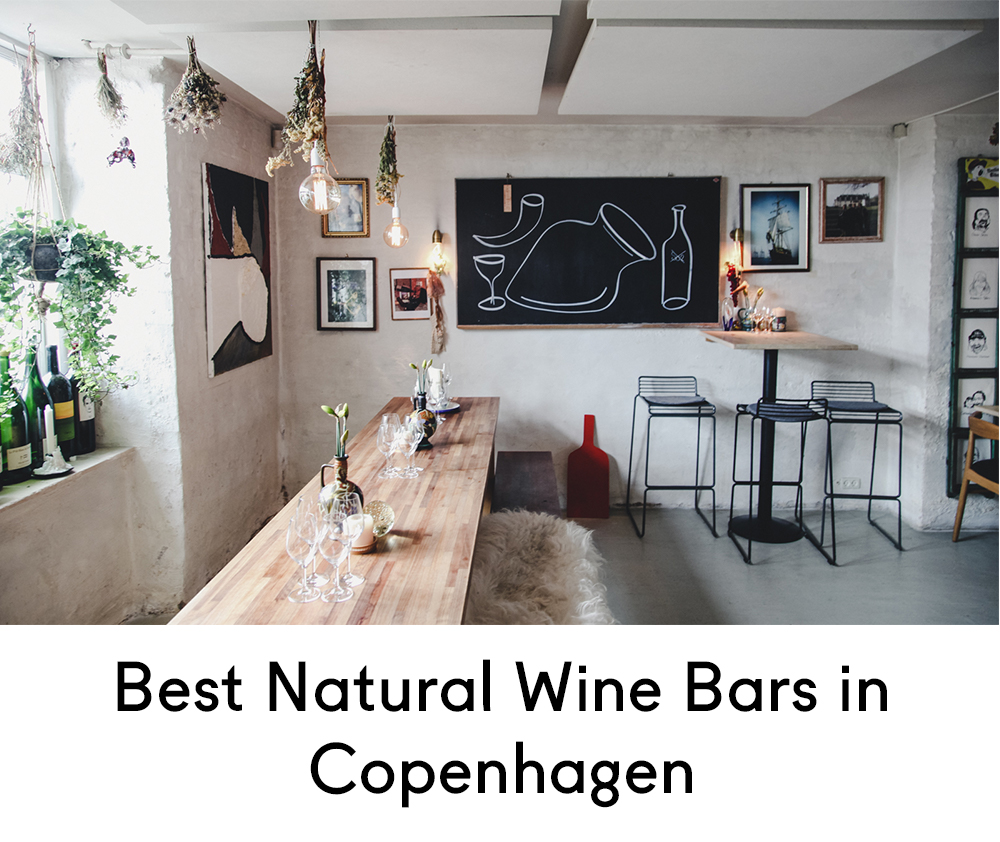 | 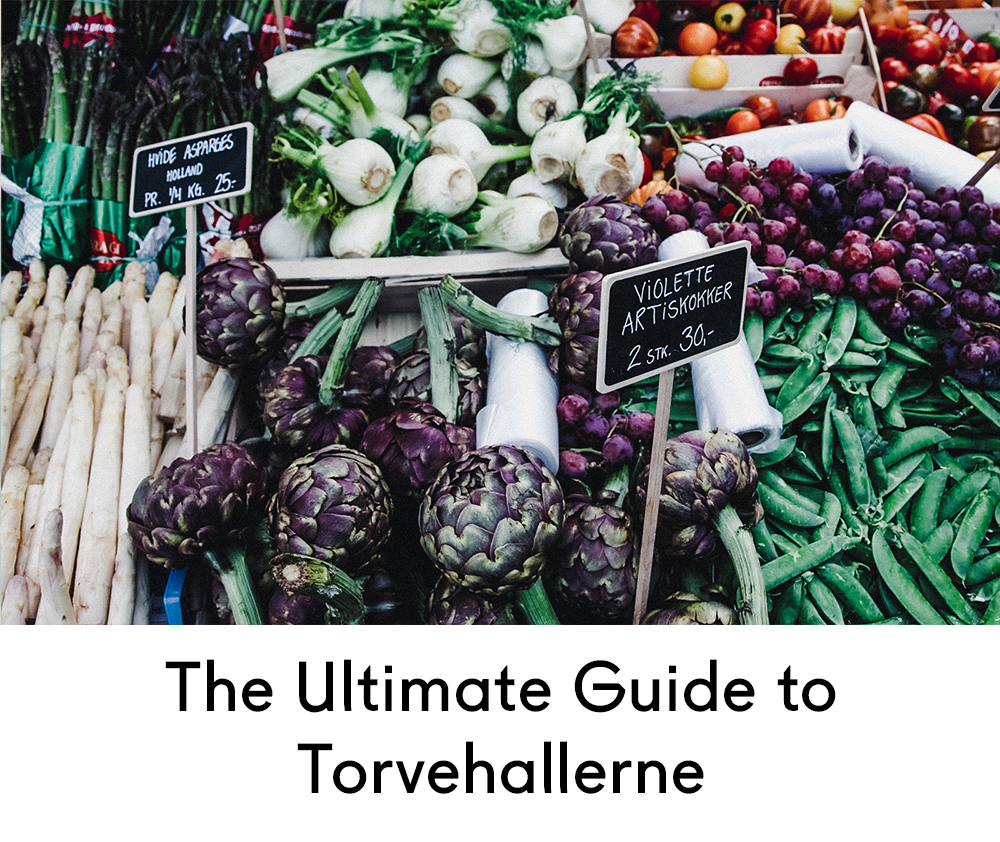 |
 |  | 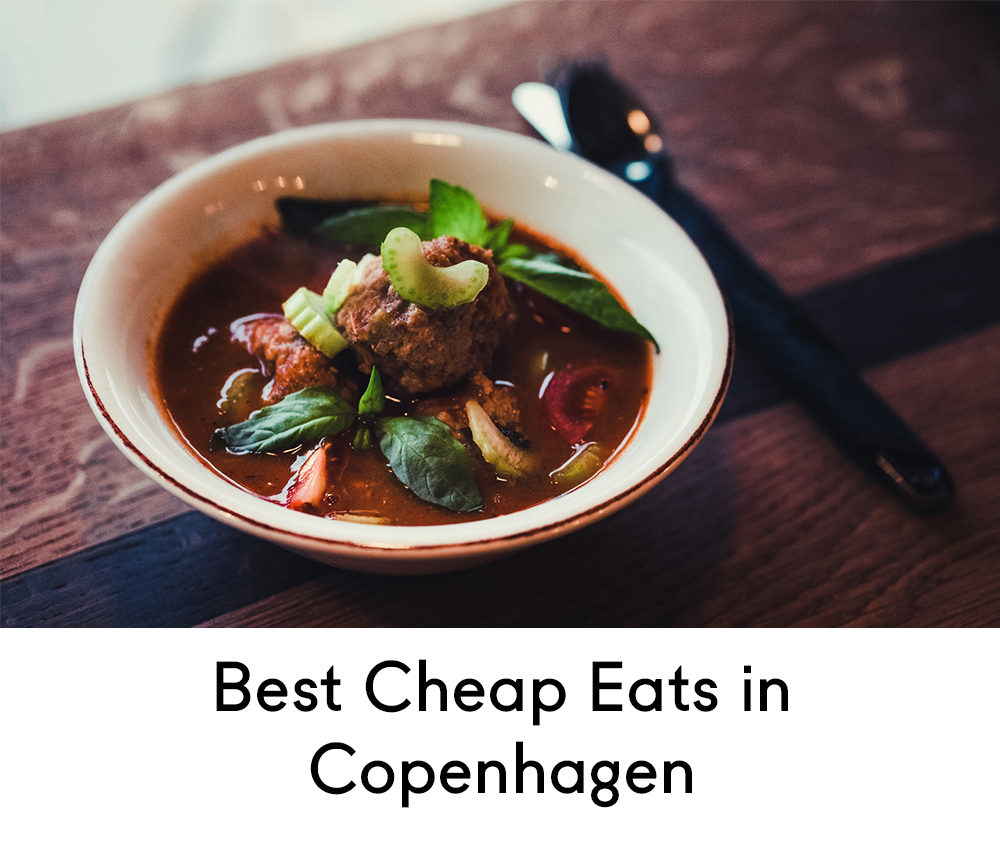 |
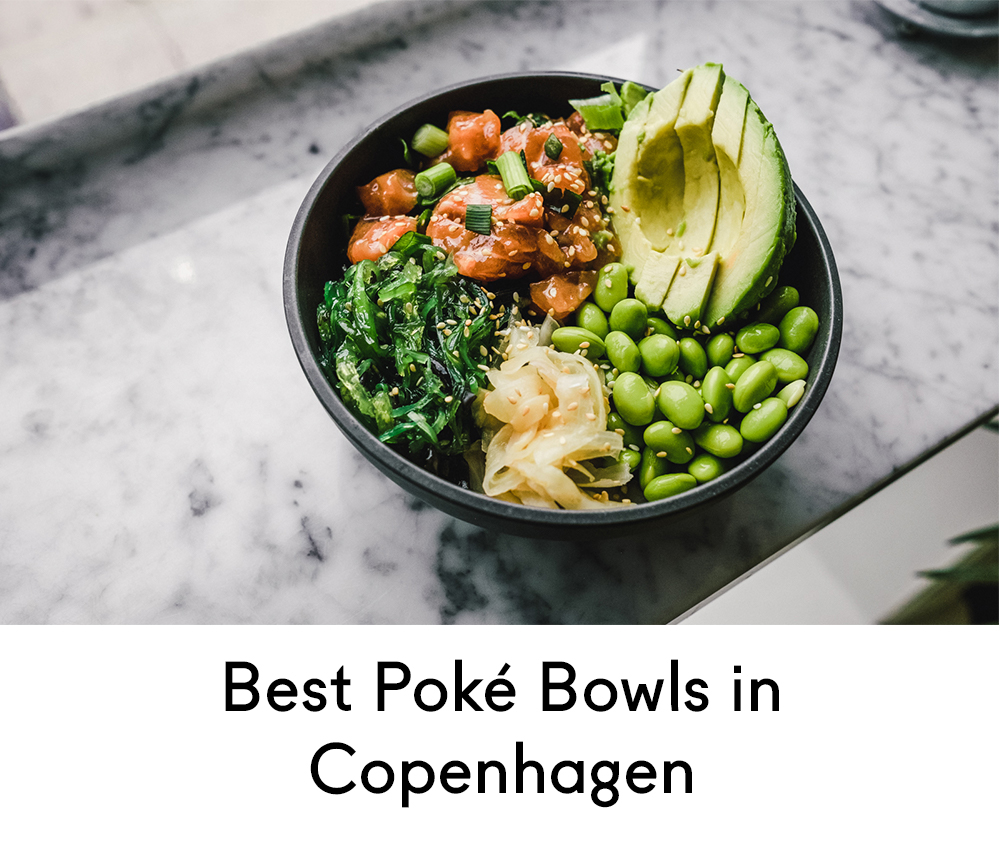 |  | 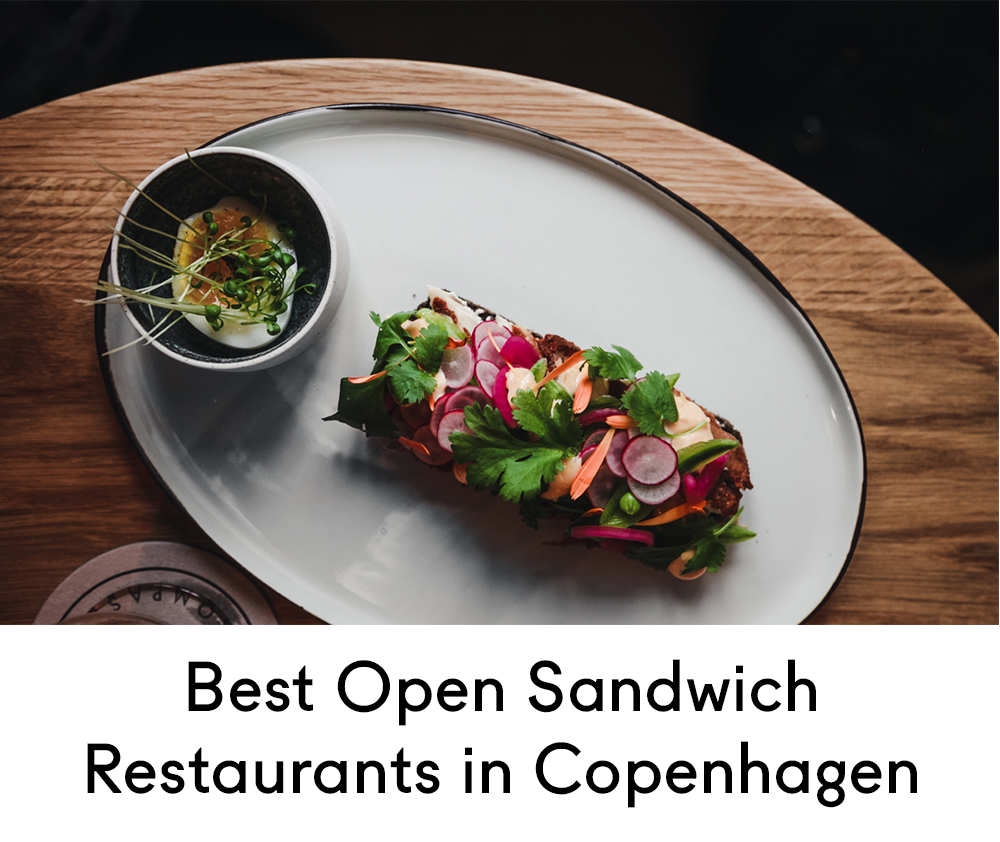 |
 | 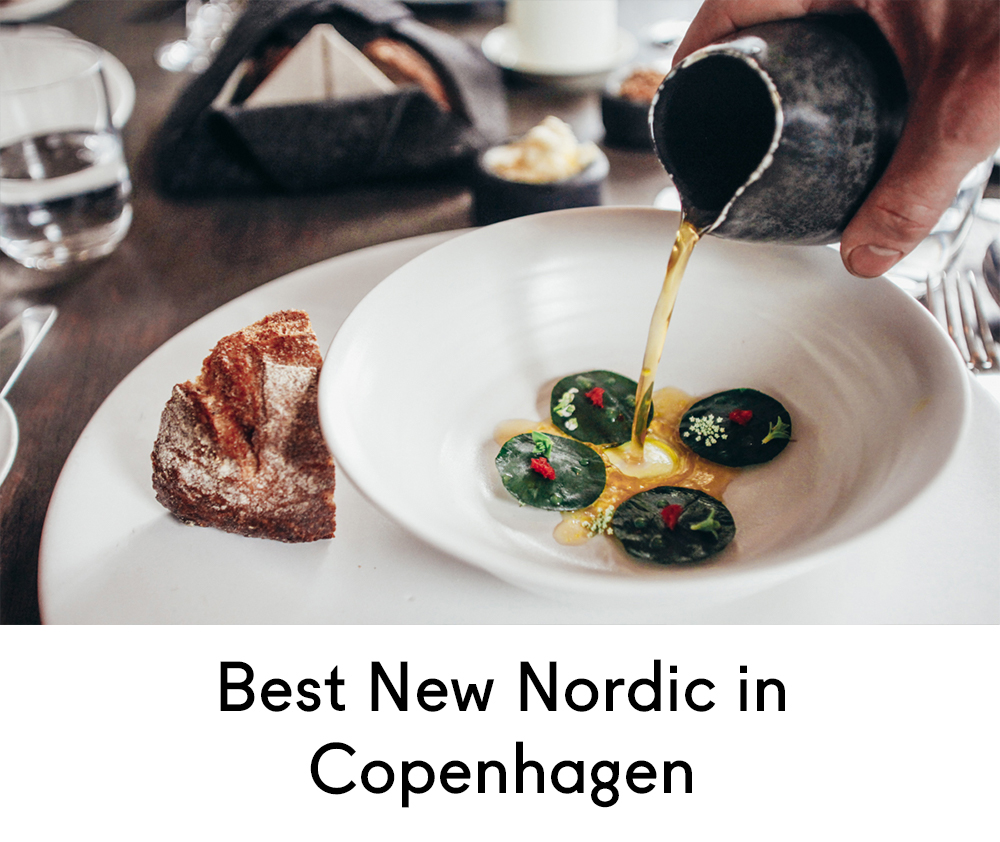 |  |

